When you think of bucket list destinations, Tunisia is not a spot that probably comes to mind.
*This post may contain affiliate links, as a result, we may receive a small commission (at no extra cost to you) on any bookings/purchases you make through the links in this post. As an Amazon Associate, we earn from qualifying purchases. Read our full disclosure
The country, located in North Africa along the Mediterranean Sea, is home to over 11 million people and over 1,300 kilometres of coastline. It is popular among European travellers as an easy, all-inclusive beach destination.
But Tunisia offers so much more than that! And that’s exactly why this destination was the perfect candidate for our annual “off-the-beaten-path adventure”.
Every year, we try to go off the beaten path and visit a destination that doesn’t top travellers’ bucket lists. We go in with low expectations and always find ourselves pleasantly surprised by the adventure. Our trip to Tunisia was no different.
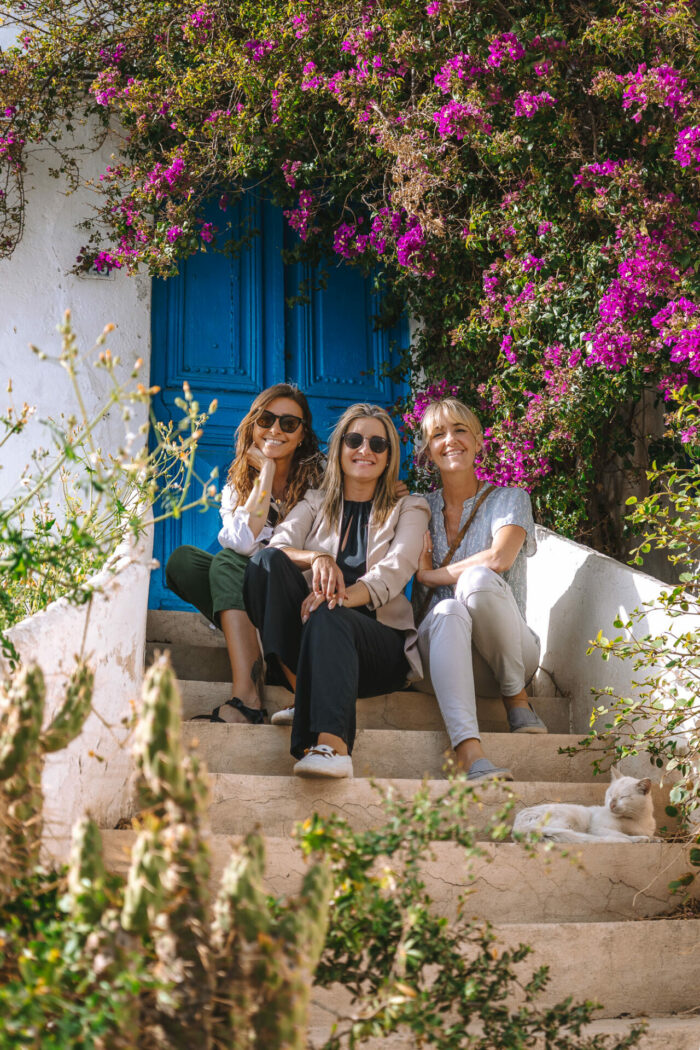
Traveling Soon? Here is a list of our favourite travel providers and accessories to help get you ready for your upcoming trip!
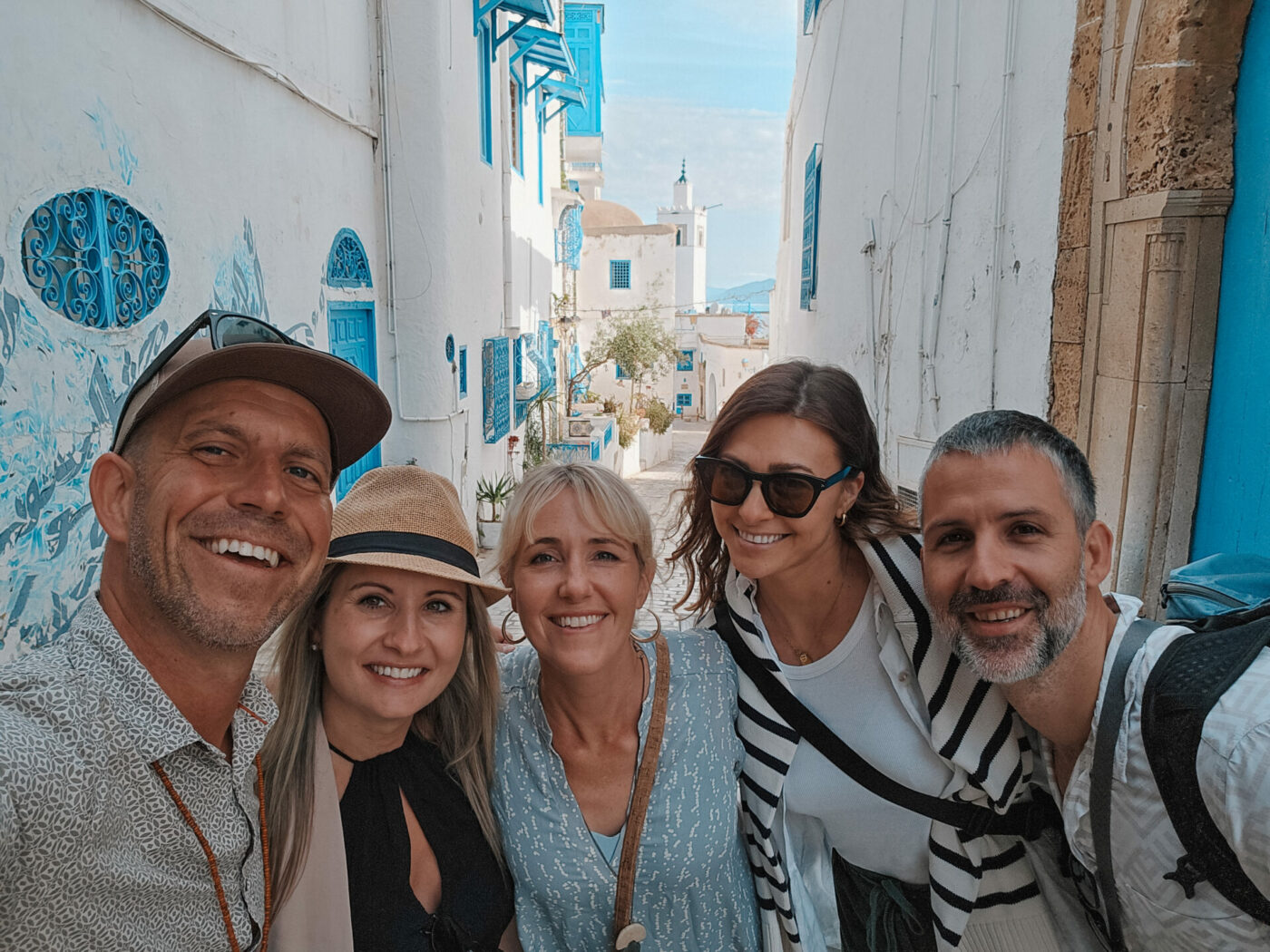
If there was one word to describe Tunisia, it’s DIVERSE! From vibrant medinas, ancient Roman ruins, out-of-this-world sandscapes, and a vibrant mix of nature, history and tradition, Tunisia offered plenty of diverse attractions and experiences!
We’ll be honest about one thing. Tunisia’s tourism infrastructure is not as developed as we expected. English was rarely spoken outside of Tunis and Sousse, accommodation options were limited and hard to find, and the tourist trail was anything but well-trodden.
That’s why we are so grateful to our partners on the ground, Tunisia Ecotourism, for handling all the logistics of our Tunisia adventure. They built the itinerary to highlight the best of Tunisia while avoiding the crowds, big hotels, and overly touristy attractions. Plus, their commitment to sustainable travel meant that our impact had a ripple effect throughout the communities we visited. If a trip to Tunisia is on your bucket list, be sure to look up their group tours or reach out to get a quote for a customized trip!
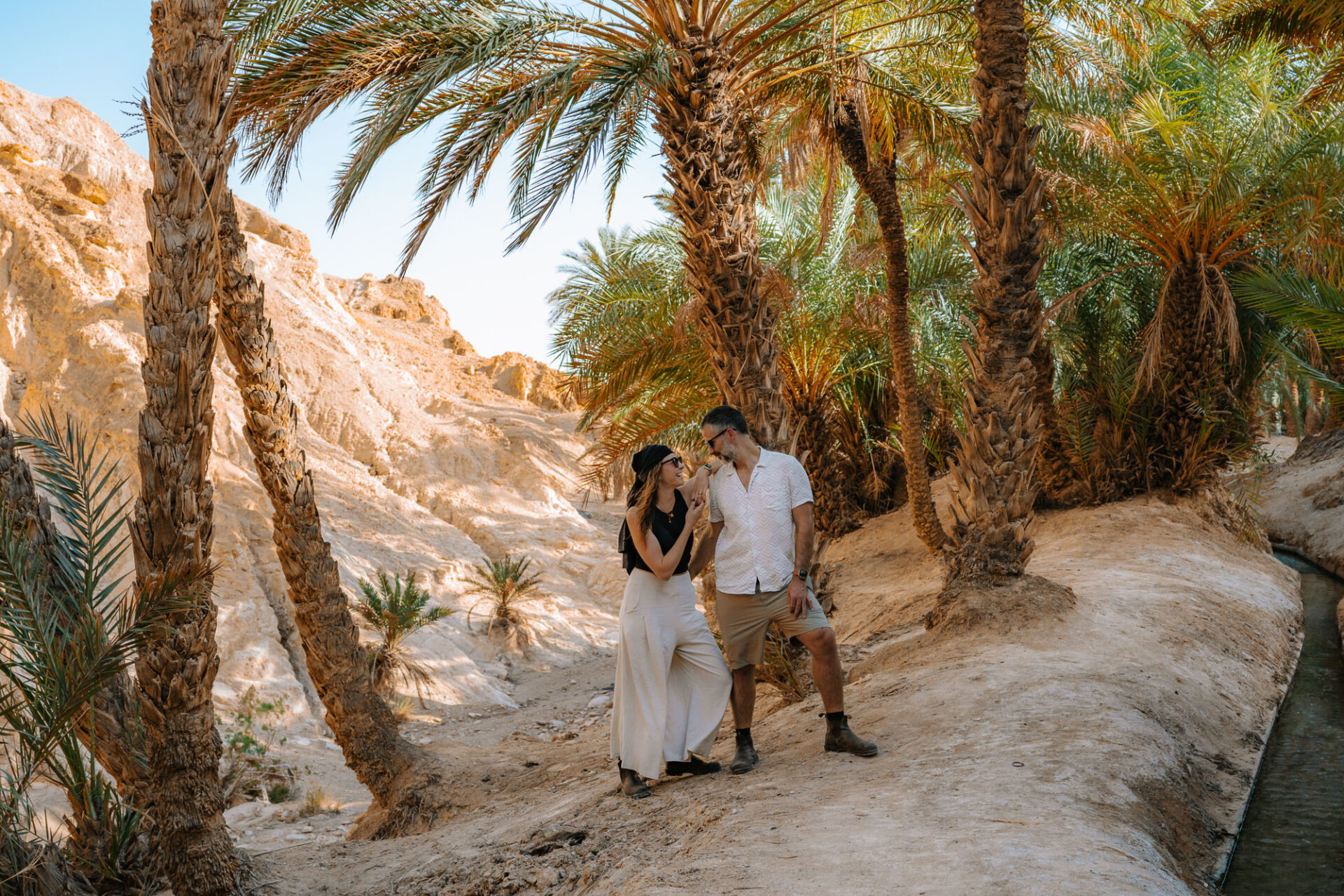
Without further ado, let’s jump in! We can’t wait to share the highlights of our visit to Tunisia with you!
Top 10 Places to Visit & Things to Do in Tunisia
1. Sidi Bou Said
Iconic blue-and-white houses, cobblestone streets, and panoramic cliff-top views of the Mediterranean Sea make this one of the most Instagrammable towns in Tunisia. It’s always been something of an artist’s haven: throughout history, many artists and philosophers have worked, lived, and were inspired by this charming town.
You can spend a night (or a few) in Sidi Bou Said (we would recommend it) or simply visit for a few hours in the afternoon. Take a stroll down narrow alleyways and look for al fresco cafés, local restaurants, art galleries, and admire a mix of Ottoman and Andalusian architecture. If you want to do some shopping, the medina is known for carpets, ceramics, leather slippers, and oriental tunics.
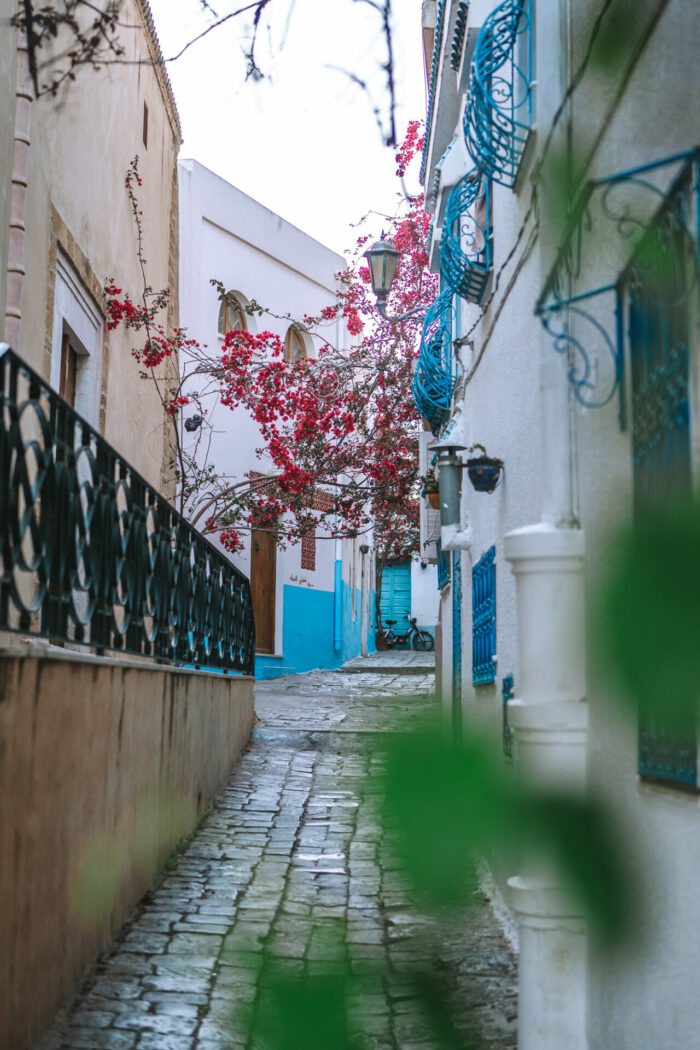
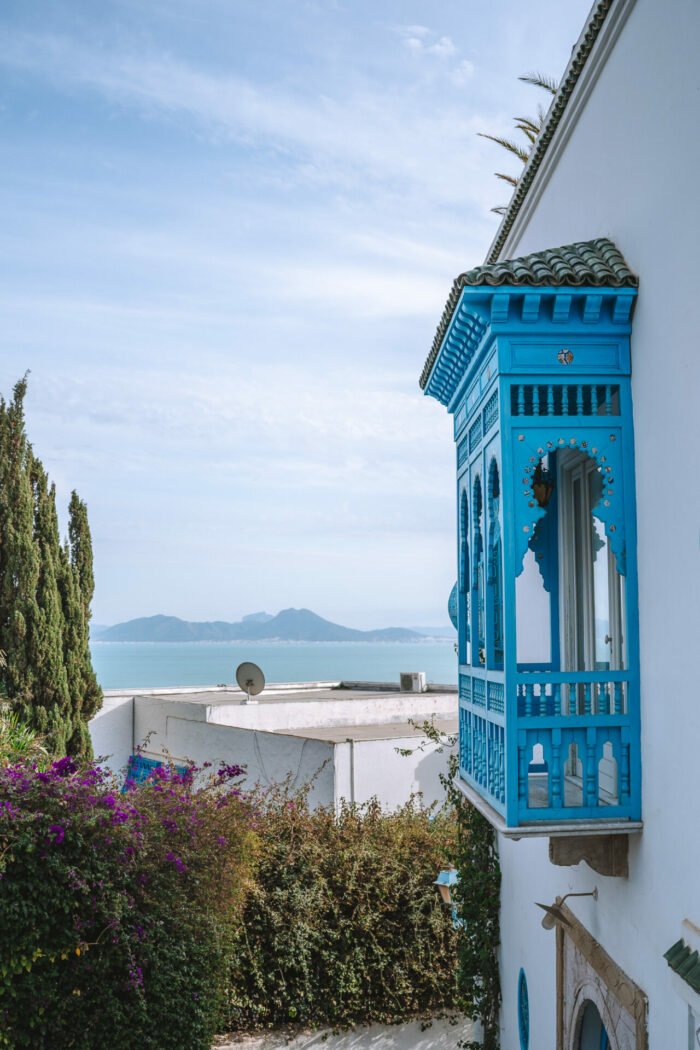
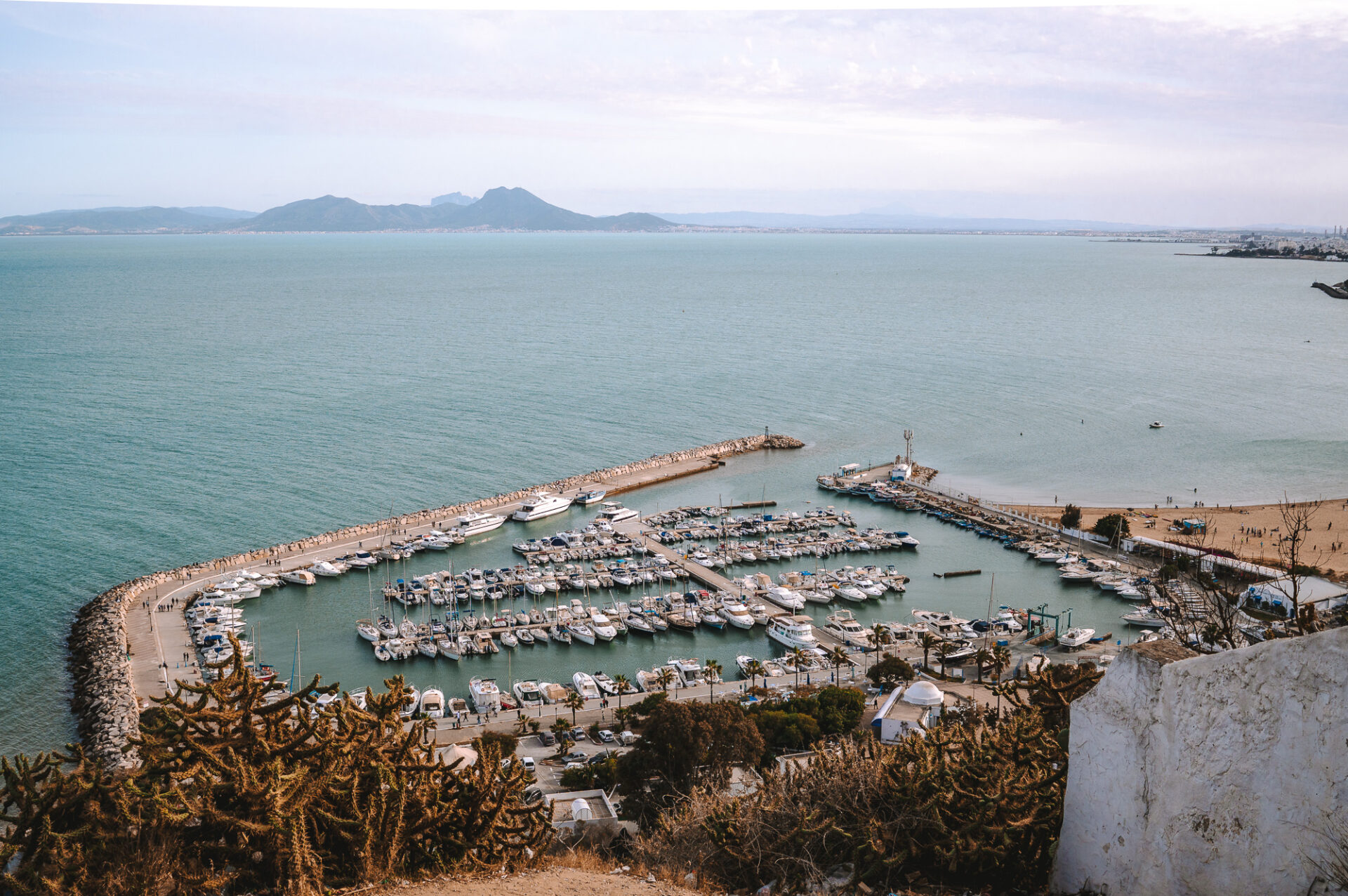
Where to Stay
We didn’t stay in Sidi Bou Said, but in a neighbourhood of La Marsa, located just 30 mins away. Our hotel, Dar Souad, was a great option if you want to be centrally located while exploring Tunis, Carthage and Sidi Bou Said. The architecture was beautiful, with intricate details in every corner and lush greenery covering the space. The interiors were spacious and comfortable, too.
The rooms had a private bathroom, pool or garden views, air conditioning, a flat-screen TV, a mini-bar, and free WiFi. There’s also an outdoor pool, open-air bath, garden, and bar. Another big highlight here was the food! An authentic Tunisian breakfast spread was just what we needed to start our adventure in Tunisia!
2. Carthage
Named after one of the most glorious ancient cities of the Mediterranean, Carthage is Tunisia’s most famous site for ancient Roman ruins. It was first founded by the Phoenicians, then conquered by the Romans, and rebuilt into one of the richest cities of the Roman Empire.
Today, Carthage is a UNESCO World Heritage Site with well-preserved Roman ruins that paint a picture of what life in the ancient cities must have been like. The Roman Villas, which were once Roman luxury houses and insulae (apartment blocks), offer a glimpse of the lavish lifestyle from back in the day.
We started our visit with a stop at the Carthage National Museum, home to important relics, artifacts, and Roman mosaics. The complexity of the mosaics showcased in this museum blew us away. Our guide offered a great introduction to Tunisia’s history that laid an important foundation for the rest of our trip. It was a perfect stop to begin the trip and one we definitely recommend.
The Bardo Museum of African Modern Art is another worthy spot to visit while in Carthage.
A short walk downhill will lead you to the Antonine Baths, the largest set of Roman thermae (bath complex) in North Africa, and one of the three largest ever built by the Roman Empire. The site itself is quite small and easy to explore, but is impressive nonetheless.
If you are short on time (like we were), a visit to Carthage can be shortened to just half a day. But if you have more time to space, the area has a lot of other attractions, including coastal resorts, Thalasso spa centres, golf courses, restaurants, and even nightclubs.
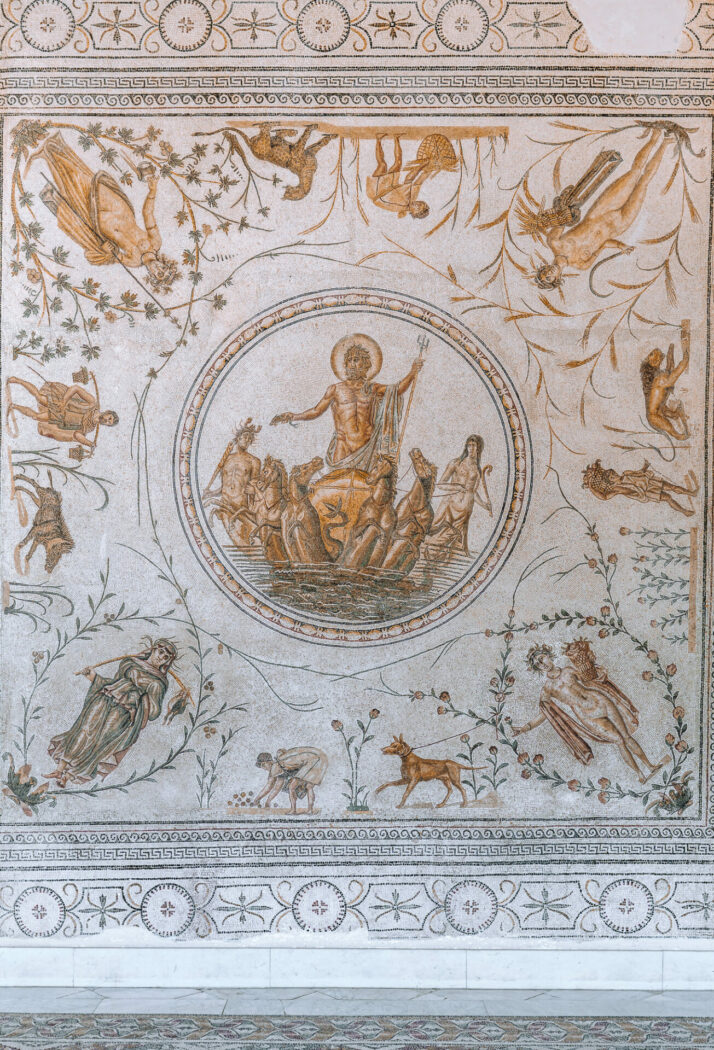
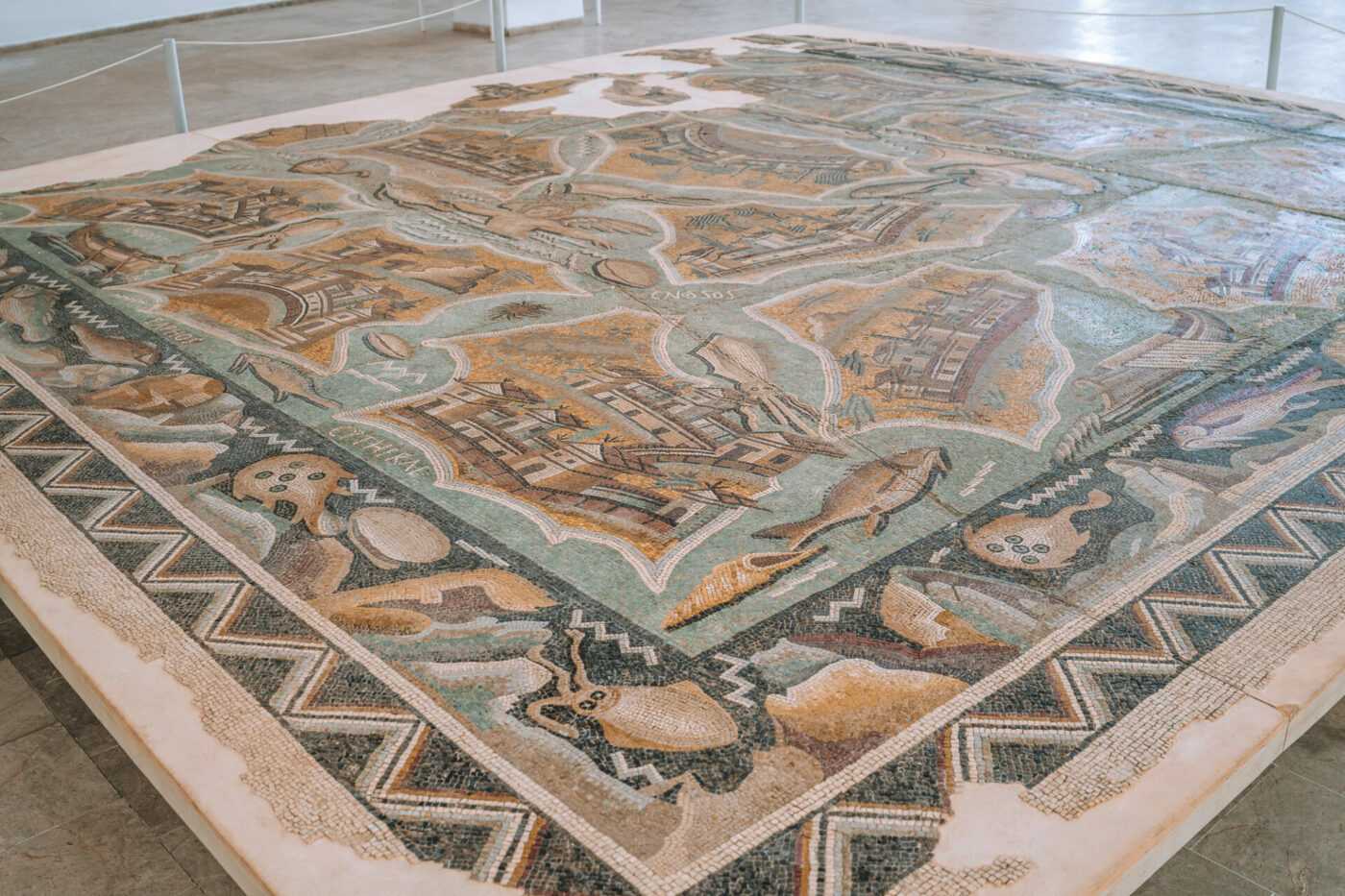
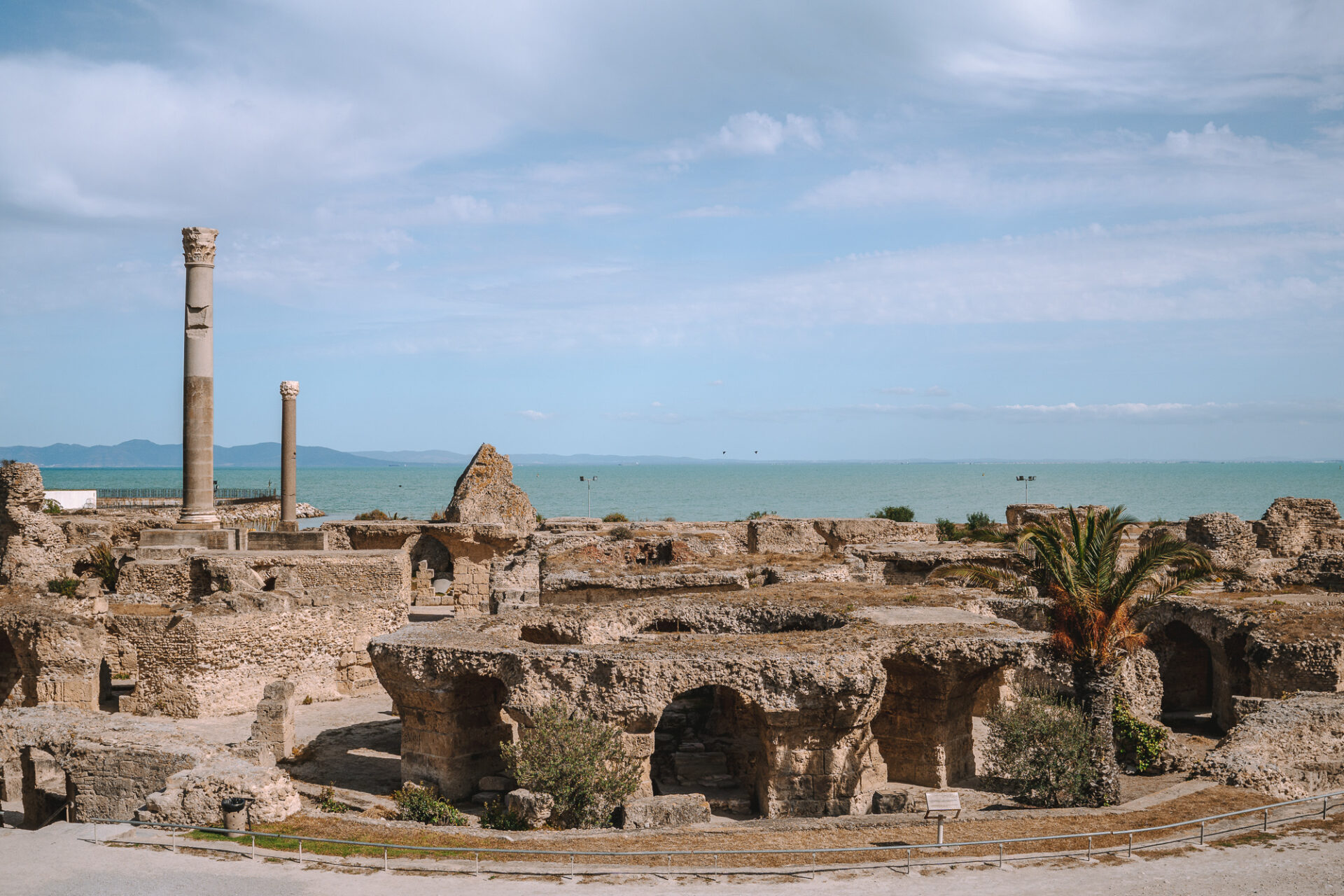
3. Bizerte
From Carthage, we traveled North, to a coastal city of Bizerte. This historic town was once a Phoenician outpost, a Spanish stronghold, and then a naval port during the French colonial period. Today, tourists know it as a great base for exploring the northern Mediterranean coastline. Around town, there are a few historical sites, boat tours, and plenty of fresh seafood.
One of the main attractions of Bizerte is the Spanish Fort, which overlooks the medina from the north. Today, all that remains are two long walls and one citadel, but the sweeping views across town are impressive.
Stop by Bizerte Medina for traditional crafts and get lost among narrow alleyways. There are souks that double as workshops for metalworkers and carpenters, as well as butcher and grocer shops. This area is purely residential, and it’s great to support a marketplace that feels very authentic.
At sunset, join the locals along the waterfront lined with colourful fishing boats and enjoy the warm hues of the day over a cup of Baklawa Tea. The tea, a Tunisian specialty, is a local twist of Moroccan mint tea and is served with a handful of nuts inside the cup. The nuts give the tea the substance and act as the perfect snack before dinner!
Ichkeul National Park, located about 30 minutes outside of Bizerte, is a highlight for nature lovers and is worth a day trip from the city. The park is best known for its wildlife and particularly for birdwatching. Lake Ichkeul is a UNESCO World Heritage Site and has been a hunting reserve since the 13th century. In the winter, migratory waterbirds visit the lake in thousands, flamingos can be seen feeding on the lake’s edge, and buffalos can be found on the plains just outside the park! Bet you didn’t expect an opportunity for wildlife watching in Tunisia!
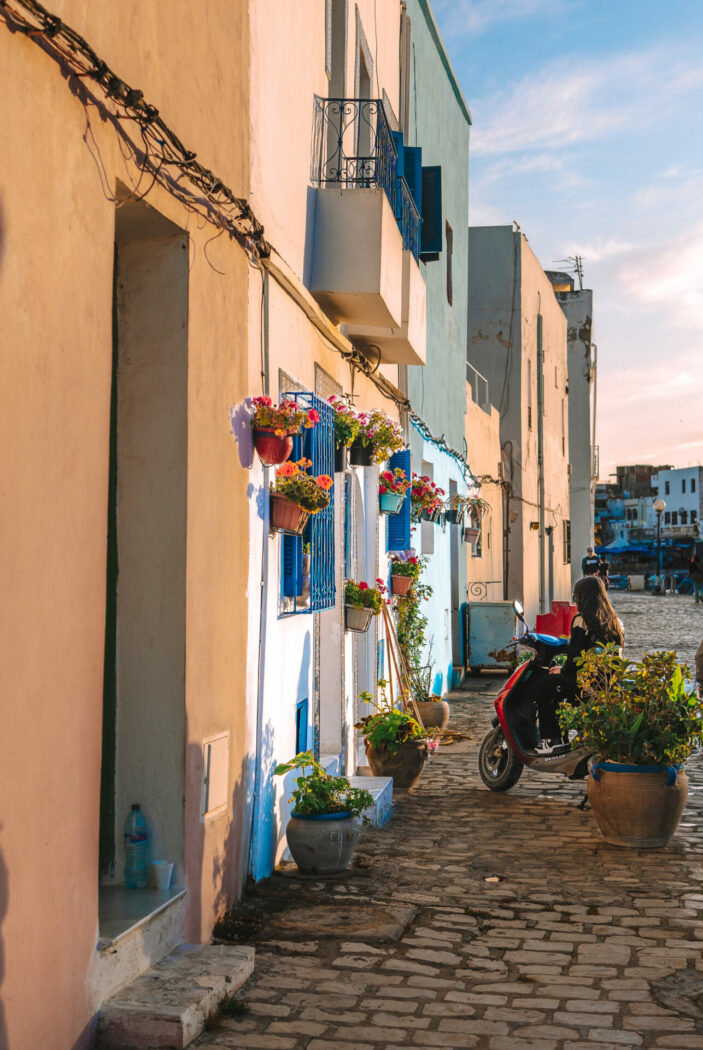

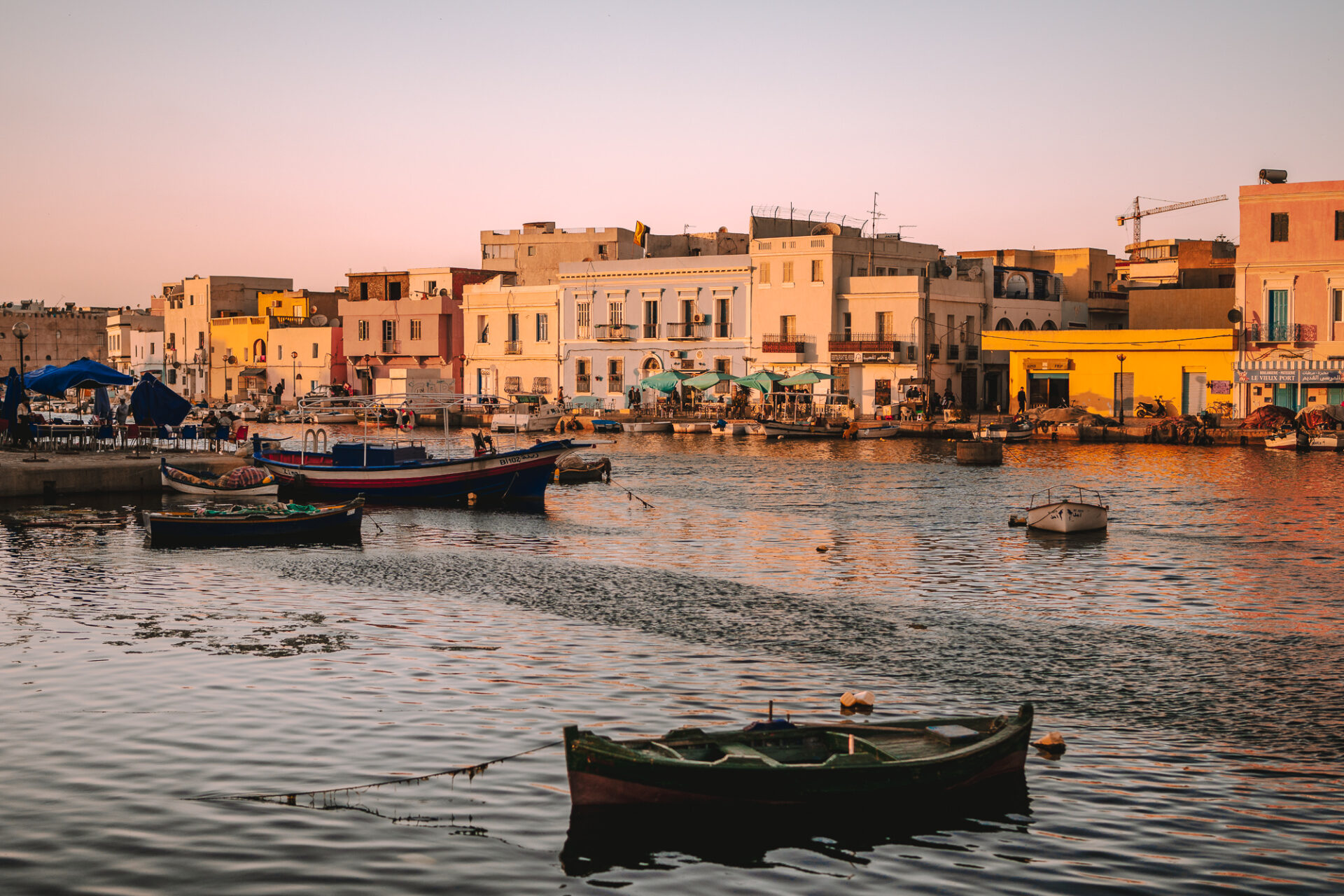
Where to Stay
We didn’t stay in Bizerte itself and instead travelled a bit further north to the beautiful cliffs of Cap Blanc. The family-run Cap Blanc Guest House was the perfect accommodation for a few nights. This quaint guest house with unobstructed views of bright blue Cap Blanc Bay had a warm atmosphere that made us feel right at home. Our room was breezy, comfortable, and well-maintained. The suites come with a private bathroom and individual air conditioning, plus an LCD TV and kitchenette.
The best part of this guest house was definitely the hosts, who went above and beyond for us and served the most delicious meals.
4. Dougga
A UNESCO World Heritage Site since 1997, Dougga is home to what is considered the best-preserved example of a Roman African town in North Africa. The ruins are impressive, vast and well-preserved, making it easy to imagine what life was like here in Roman times.
What makes Dougga’s history quite unique is that it was a well-established Numidian settlement before the Romans took over. But instead of wiping out the entire city as they did in Carthage, the Romans integrated themselves into the ancient town. This is evidenced by pre-Roman ancient remains and the tangled maze of streets. The Corinthian columns, pediments, and back walls are still intact today.
Right at the archaeological site’s main entrance is the Roman Theater, dating back to 168 AD. It has an elevated stage and 19 tiers that could accommodate 3,500 people back in the day. Today, the theatre is also used as a venue for local music festivals held in July or August.
Another ruin to visit is the Temple of Saturn, built in 195 AD. It used to be a temple for Baal Hammon, the chief Punic Deity, who was then reinterpreted as Saturn in the Roman era.
We spent a few hours roaming around Dougga with our guide, Muhamed, offering detailed explanations of each sight and building on site. The most incredible part of our visit was the fact that we had the entire place to ourselves! No crowds blocking our photos, or interrupting our viewings, no rush to move along or cut the visit short.
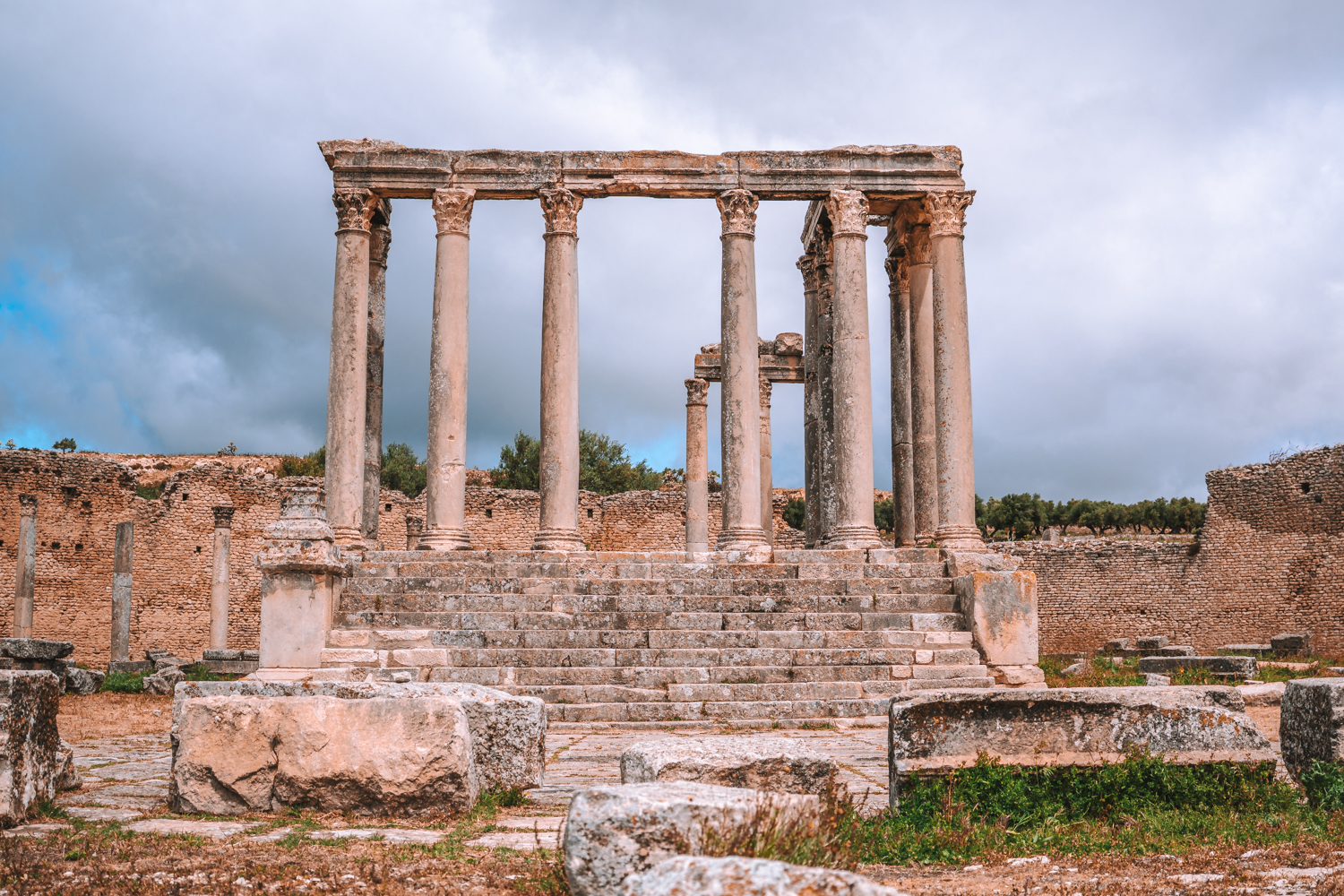




Where to Stay
We spent the night in the Dorsale Mountains at Dar Zaghouan, Tunisia’s first eco bed and breakfast. The solar-powered ecological farm was quirky and full of character. The property had a few chalet-style rooms, a bar and community shop, a hammam and spa, and a restaurant.
The highlight of our stay at Dar Zaghouan was our afternoon at the local hammam – it was an experience like no other. We were stripped and scrubbed and massaged and found a new level of bonding with our friends from the trip.
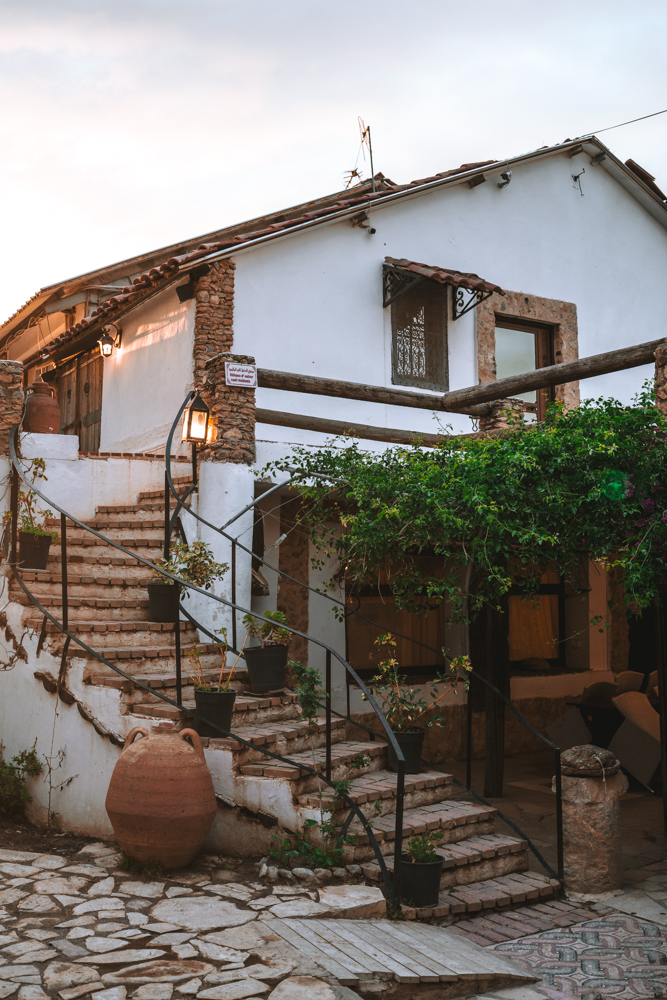
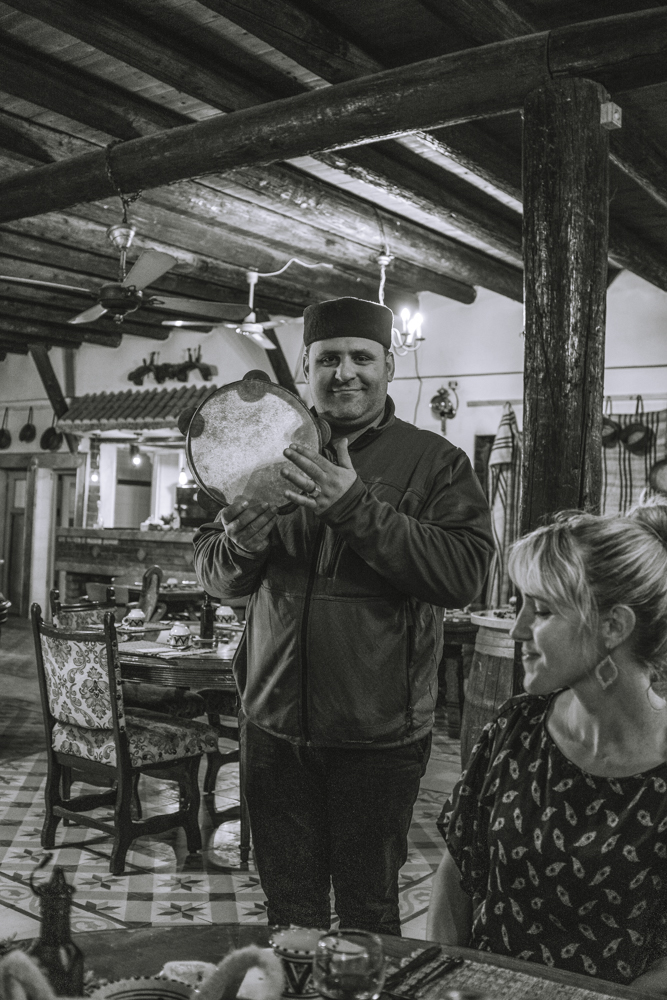
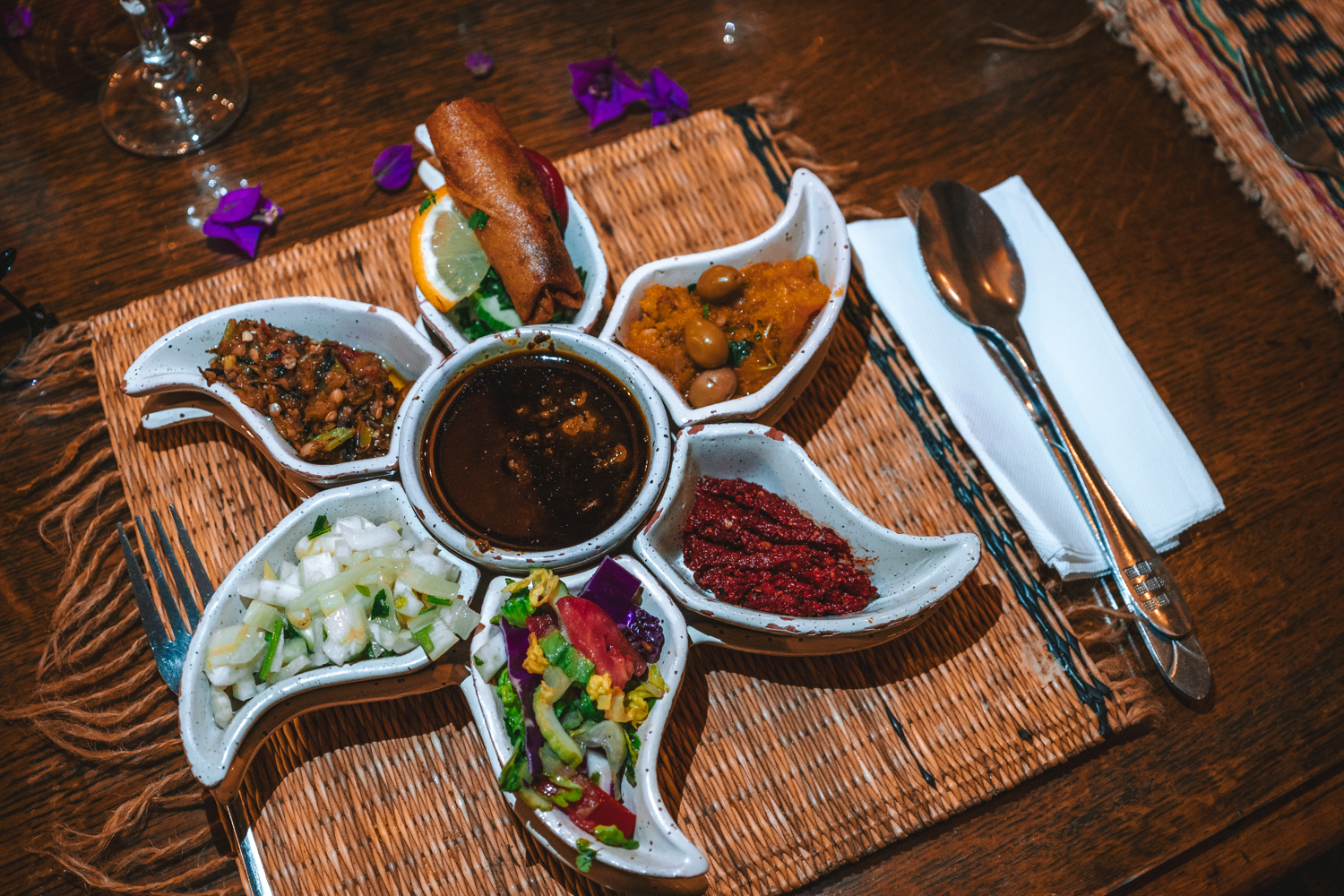

5. Kairouan
Entering Kairouan felt like stepping into another world. Recognized as a UNESCO World Heritage Site in 1988, it’s one of the holiest cities in the Islamic world. The town was founded in 670 and flourished under the Aghlabid Dynasty in the 9th Century. Its most iconic landmark, The Great Mosque, has made it a key gathering place for the Arabo-Muslim Civilisation.
The Great Mosque is the oldest Muslim place of worship in Africa and displays a mix of pre-Islamic architecture with Roman and Byzantine influences. Between 836 and 866, the Great Mosque was a place of prayer as well as a centre for teaching Islamic sciences.
Another spectacular site worth visiting in Kairouan is the Aghlabid Basins, the largest hydraulic installation from the Middle Ages. Originally, the site housed 16 majestic pools, though only 2 remain today. These basins supplied water for townspeople in a region prone to drought and without any nearby natural water sources.
The charming white and blue Kairouan’s medina is another must-visit. We found it to have a laid-back atmosphere with many nooks and crannies to explore. While exploring with our guide, we popped into a few artisan shops and stalls and got a real sense of the slow pace of life in this traditional Tunisian town.

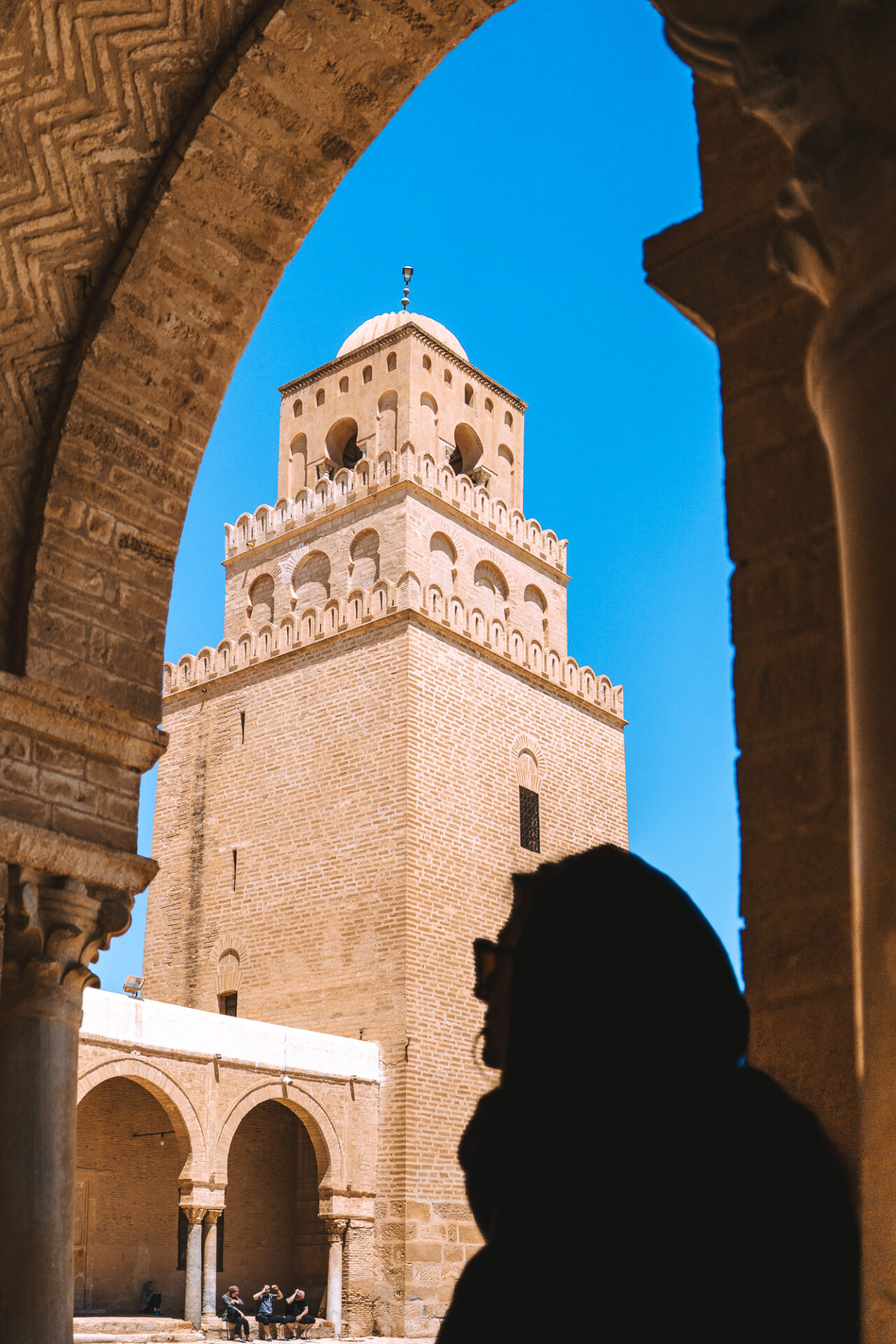
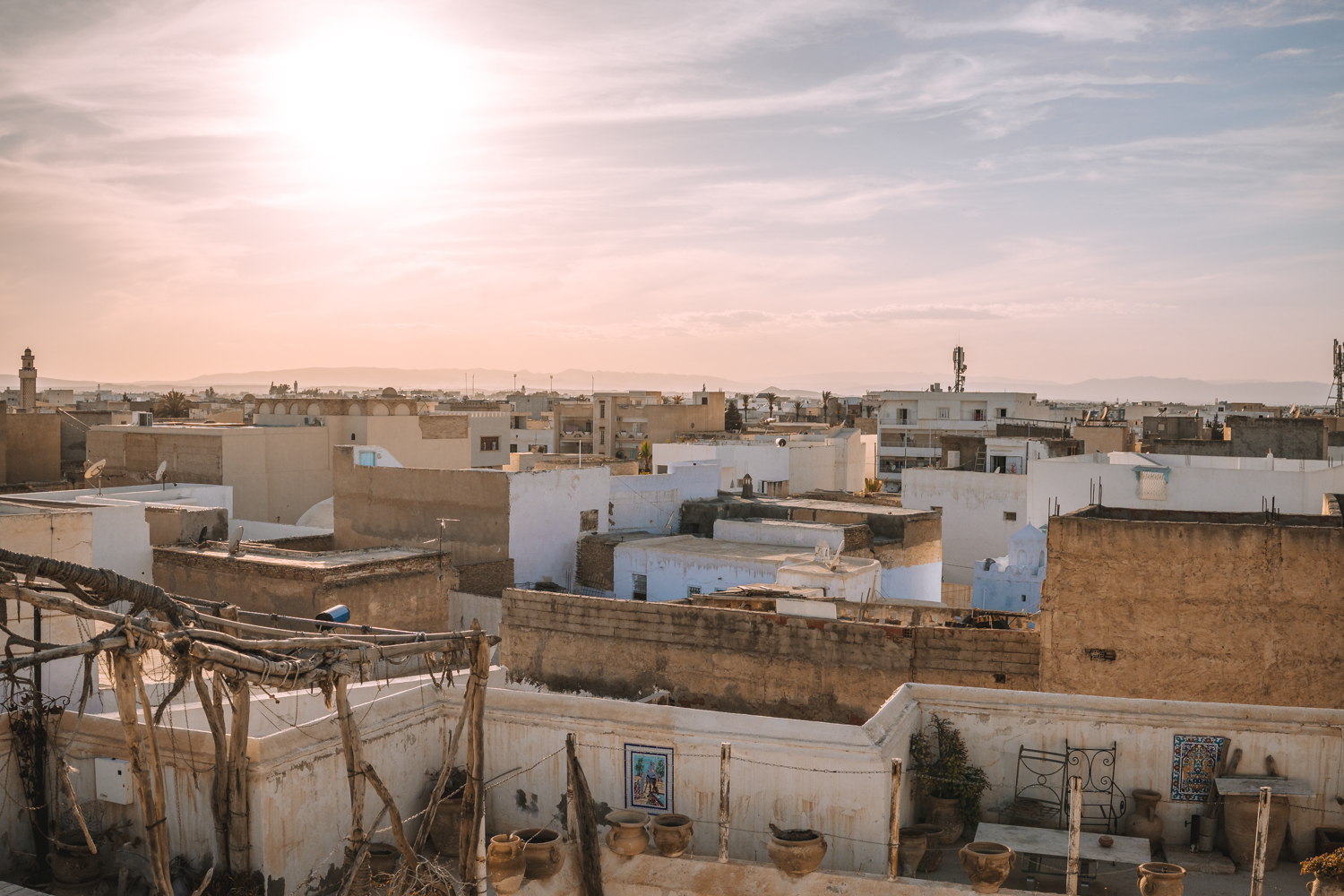
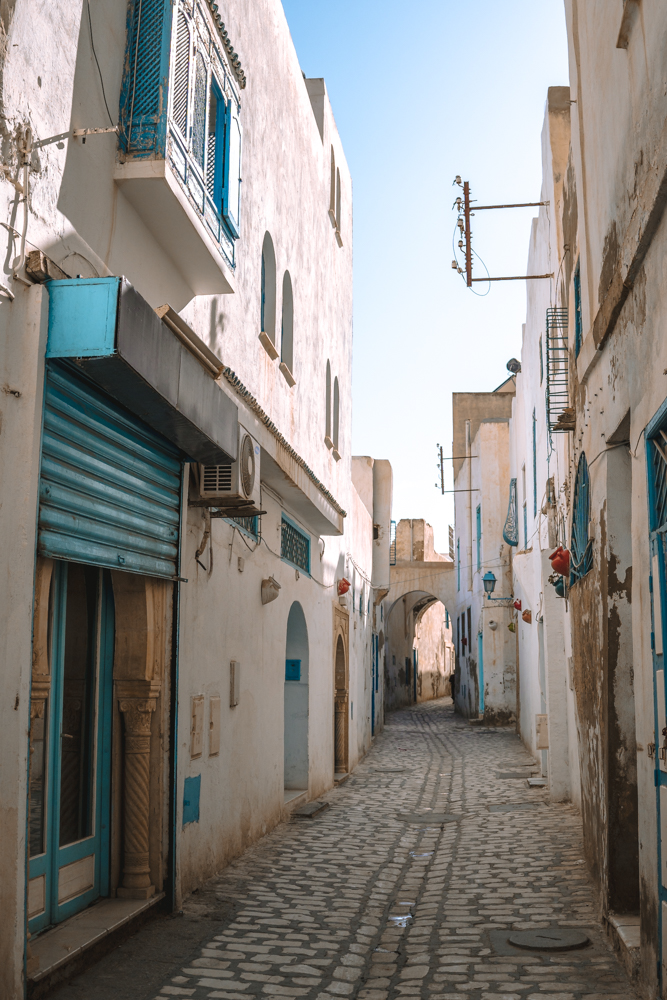



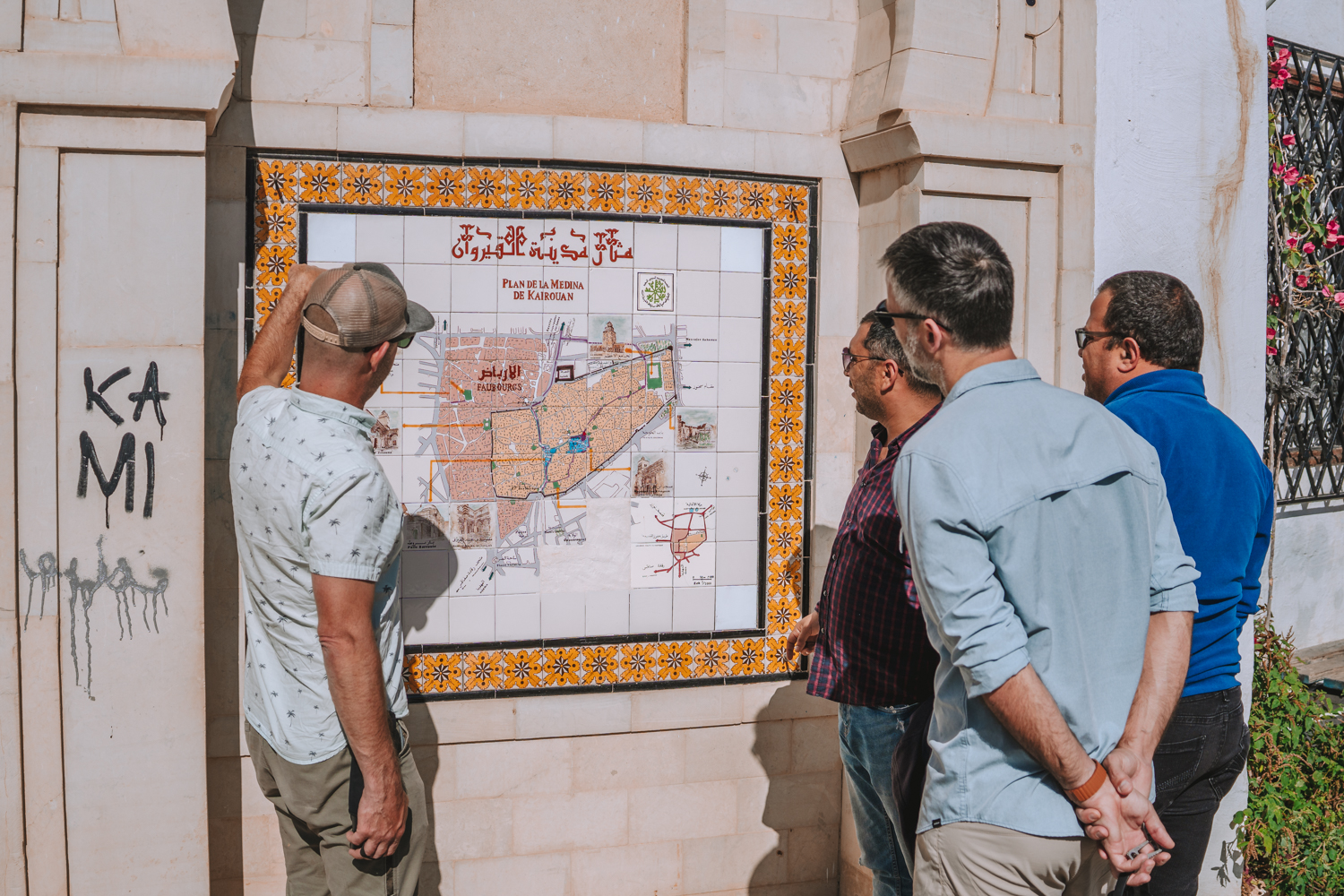
Where to Stay
We stayed at Dar Hassine Allani, a typical Tunisian guest house that showcases Arabian-Moslem architecture. Once a local’s home, this beautiful spot was just recently converted into a guest house. The 3 guest bedrooms were all unique in their own ways and featured colourful interiors and traditional decor. We particularly enjoyed hanging out on the rooftop, enjoying city views with a cup of mint tea.
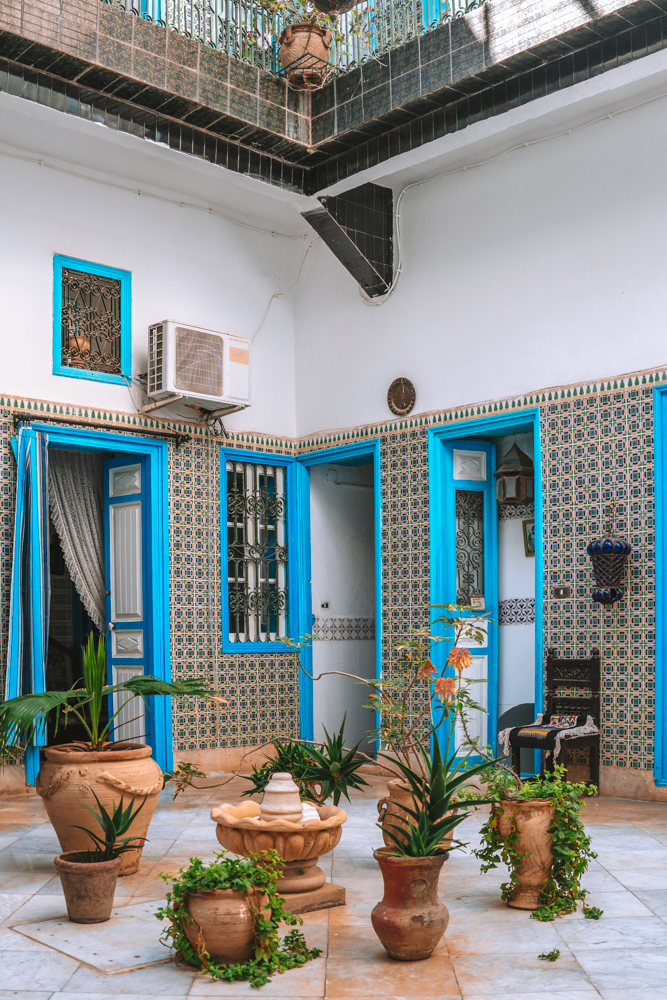
6. Chebika Oasis
For us, Chebika was the highlight of the trip! This magnificent desert oasis was unlike anything we had encountered before! It’s one of the three most famous oases in Tunisia (the other two being Tamerza and Midès —also worth visiting). A trail through the oasis led to a beautiful waterfall with a few hawker stalls at its base. The walk took about 40 minutes and was full of picture-worthy moments and beautiful views!
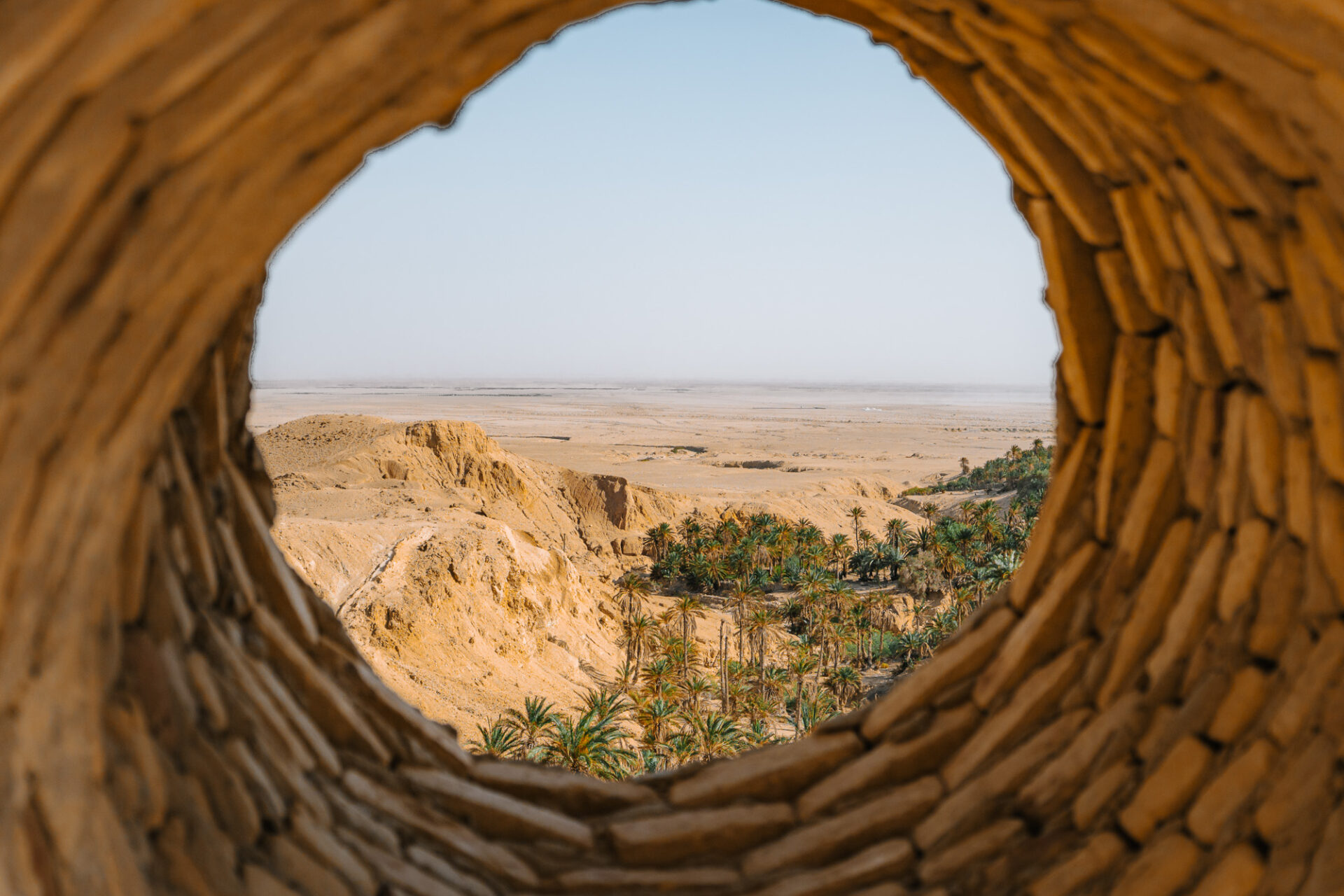
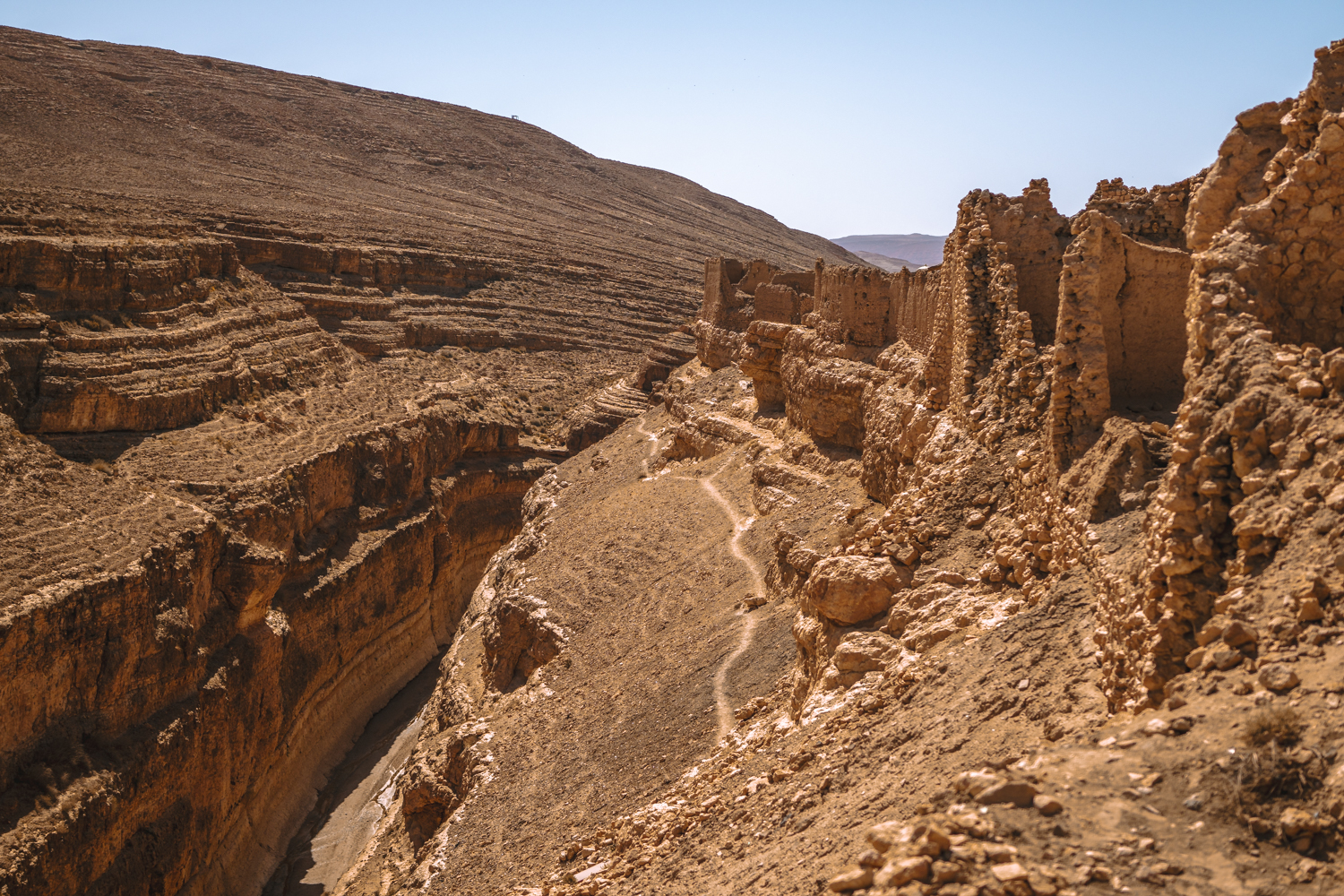
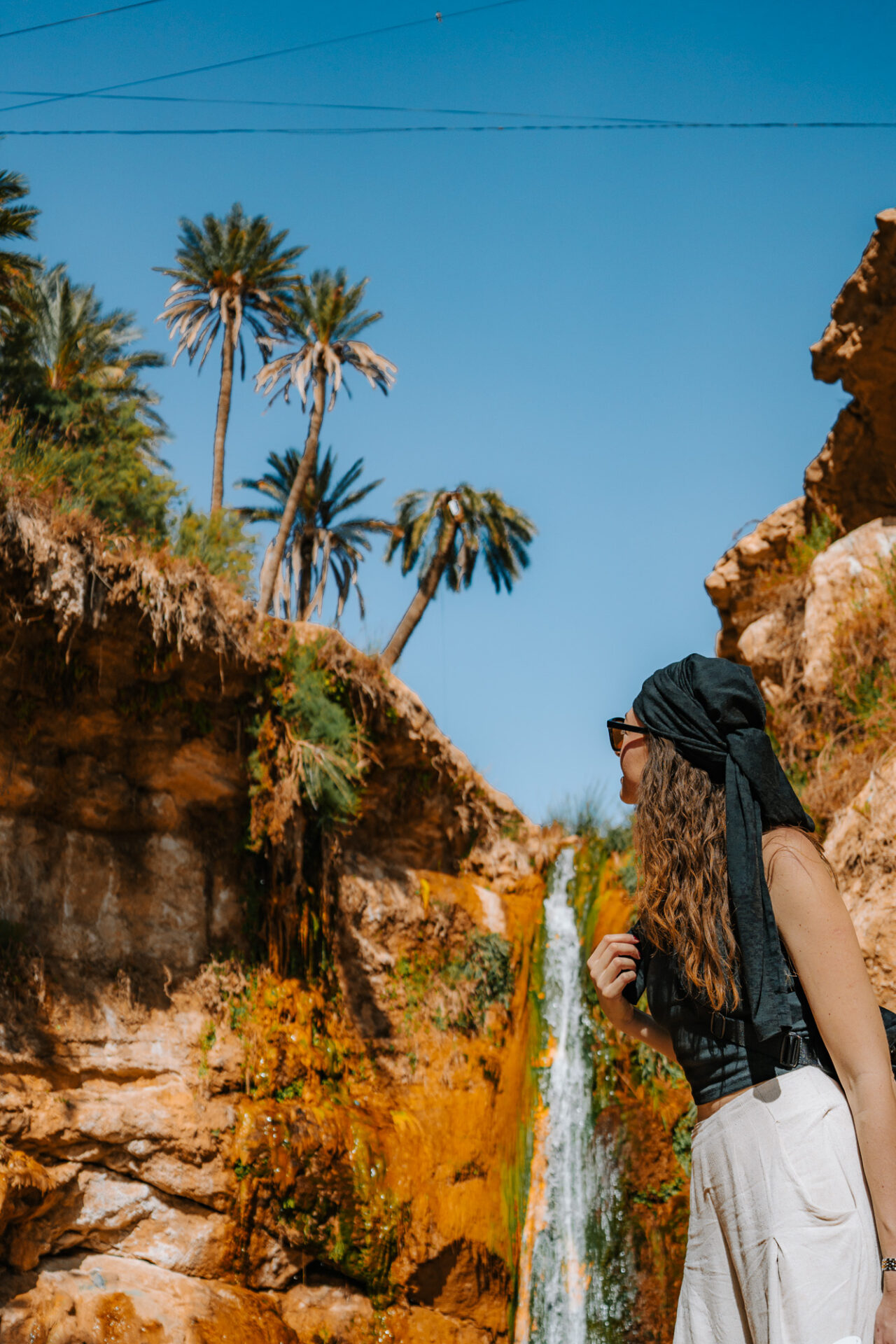
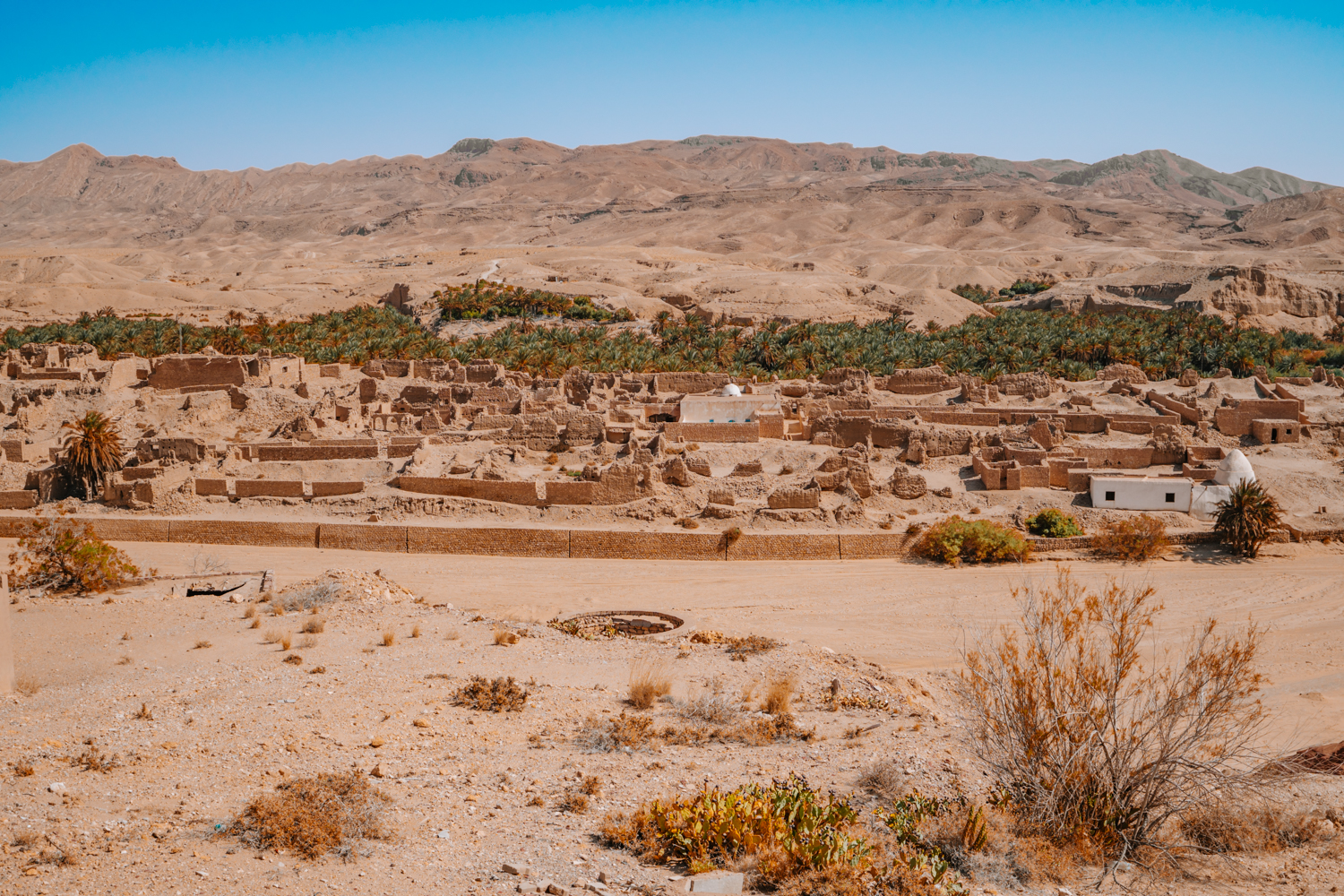
Where to Stay
Hotel Ksar Rouge was our visit taste of a large hotel in Tunisia, and we were impressed to find something of this quality and comfort so far away from civilization. The rooms were spacious, clean, and comfortable. The dinner buffet was a highlight, featuring many local dishes and an amazing spread of vegetarian options. Although we didn’t get a chance to hang out by the pool, it looked quite enticing!
7. The Desert: Jebil National Park
Tunisia’s largest national park, Jebil National Park, covers 150,000 hectares and offers a taste of the great Sahara Desert. The park was initially set up to protect the Dorcas gazelle and the Addax, although we didn’t come across either on our trip.
The park’s main attraction is a 4×4 dune adventure! Our adventure began just outside the park with a 4×4 pickup, followed by a wild ride across the dunes and an evening in a Berber camp. Staying in a traditional Bedouin tent and soaking up a true desert experience was a highlight to remember.
We watched a traditional sand bread preparation (yes, it was literally baked in the sand), enjoyed a meal at the restaurant on site and the enteratainment that followed.
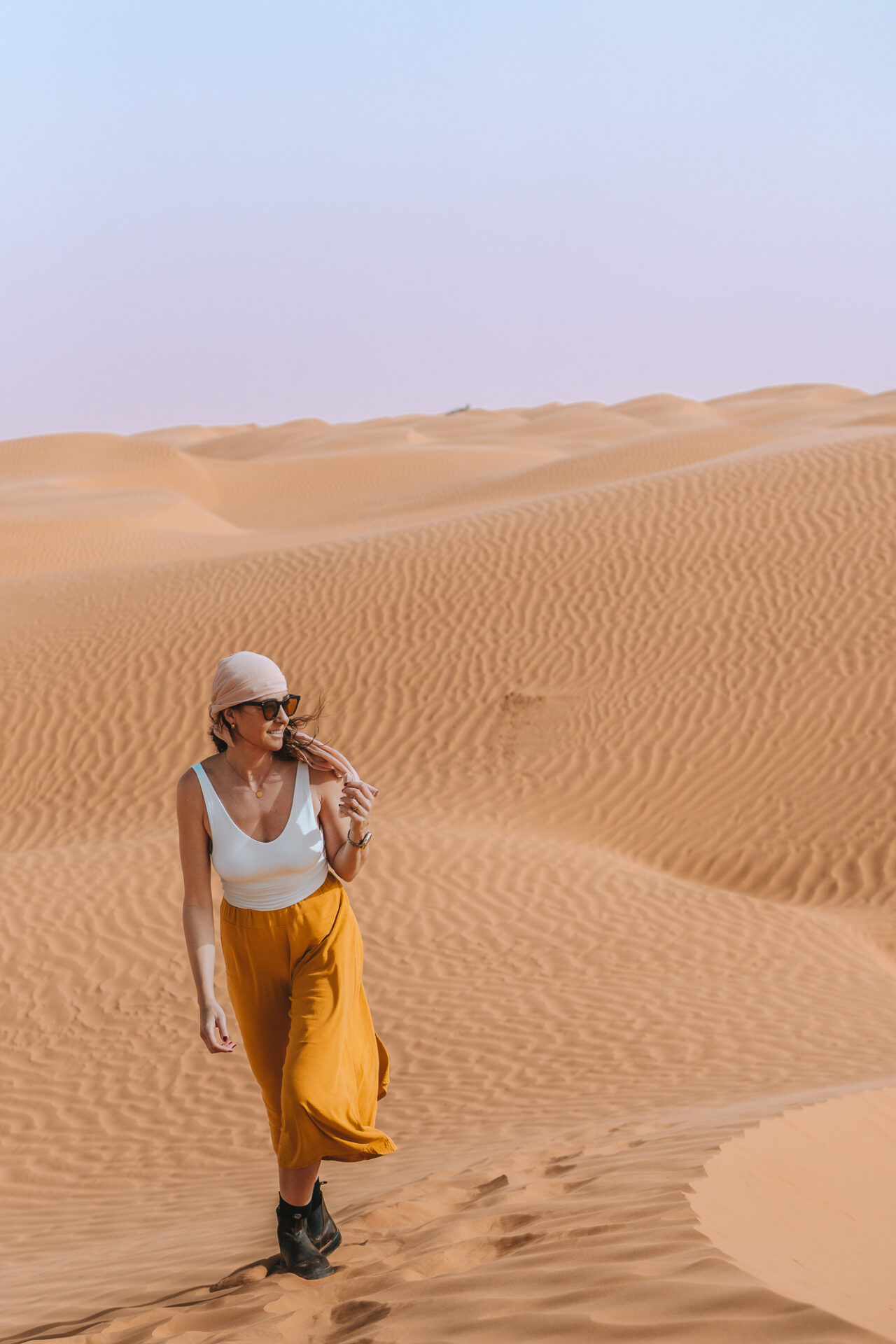
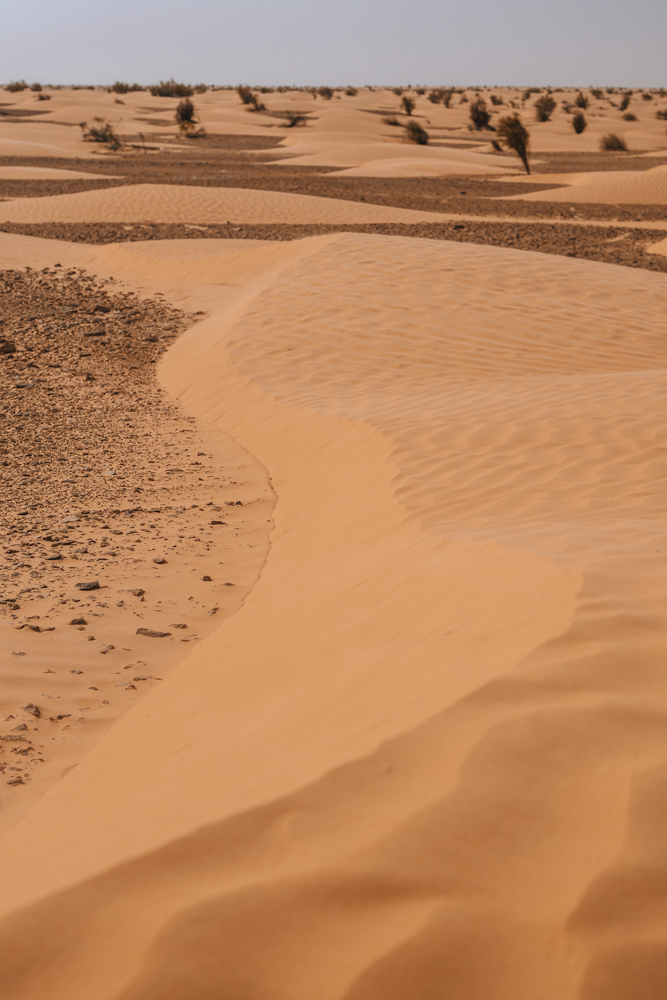

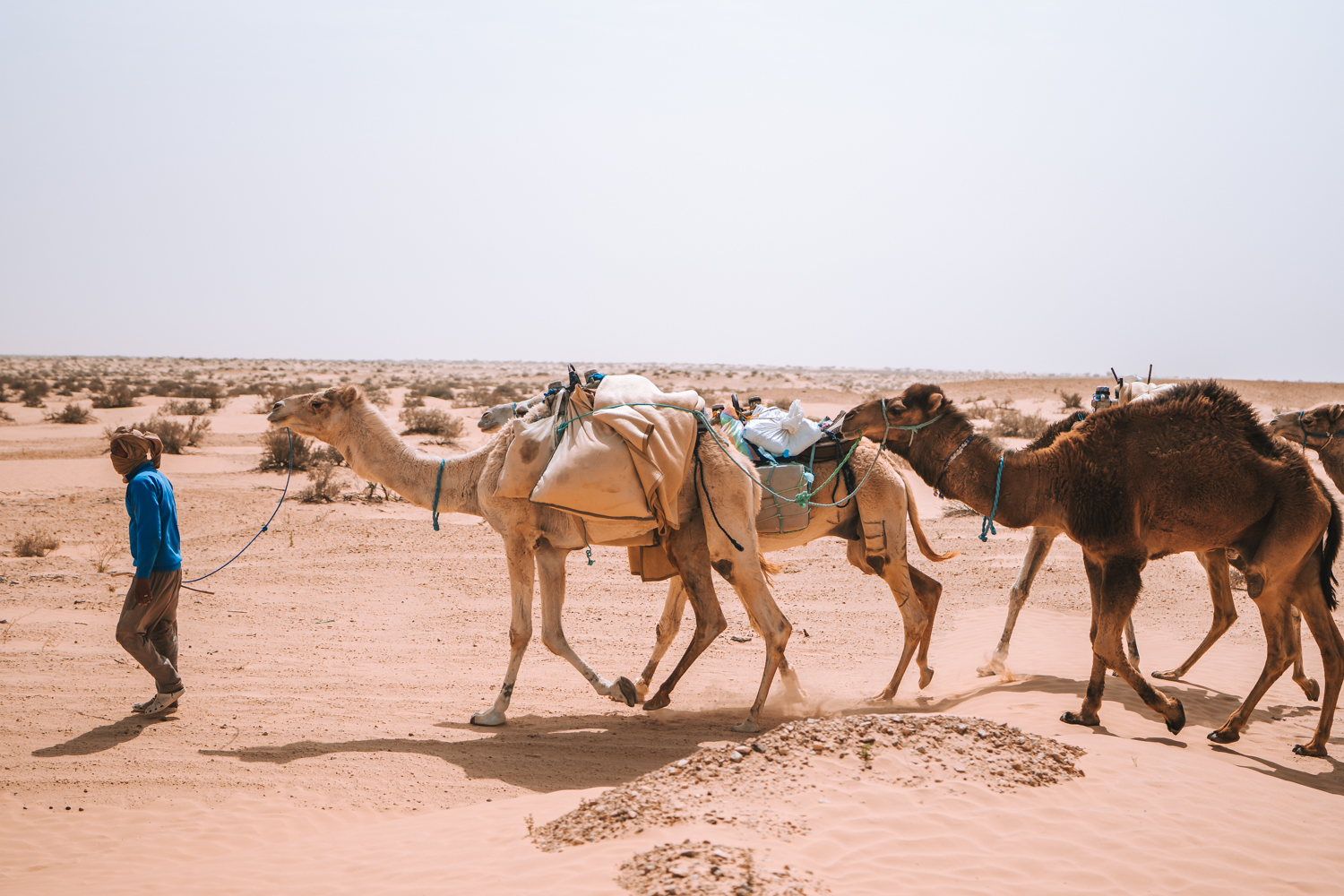
Where to Stay
There are only a handful of accommodations in the desert, and Campement Zmela is located closest to the main highway, making it easy to get to. The camp is set up in a traditional tended style, but each tent has real beds, clean linens, AC power, and even a bit of a closet for your belongings. Showers/bathroom facilities are shared, but it’s not too bad for a quiet desert retreat. We enjoyed our stay but would recommend looking for a smaller camp (there are a number of options around) as ours felt a little big and impersonal.
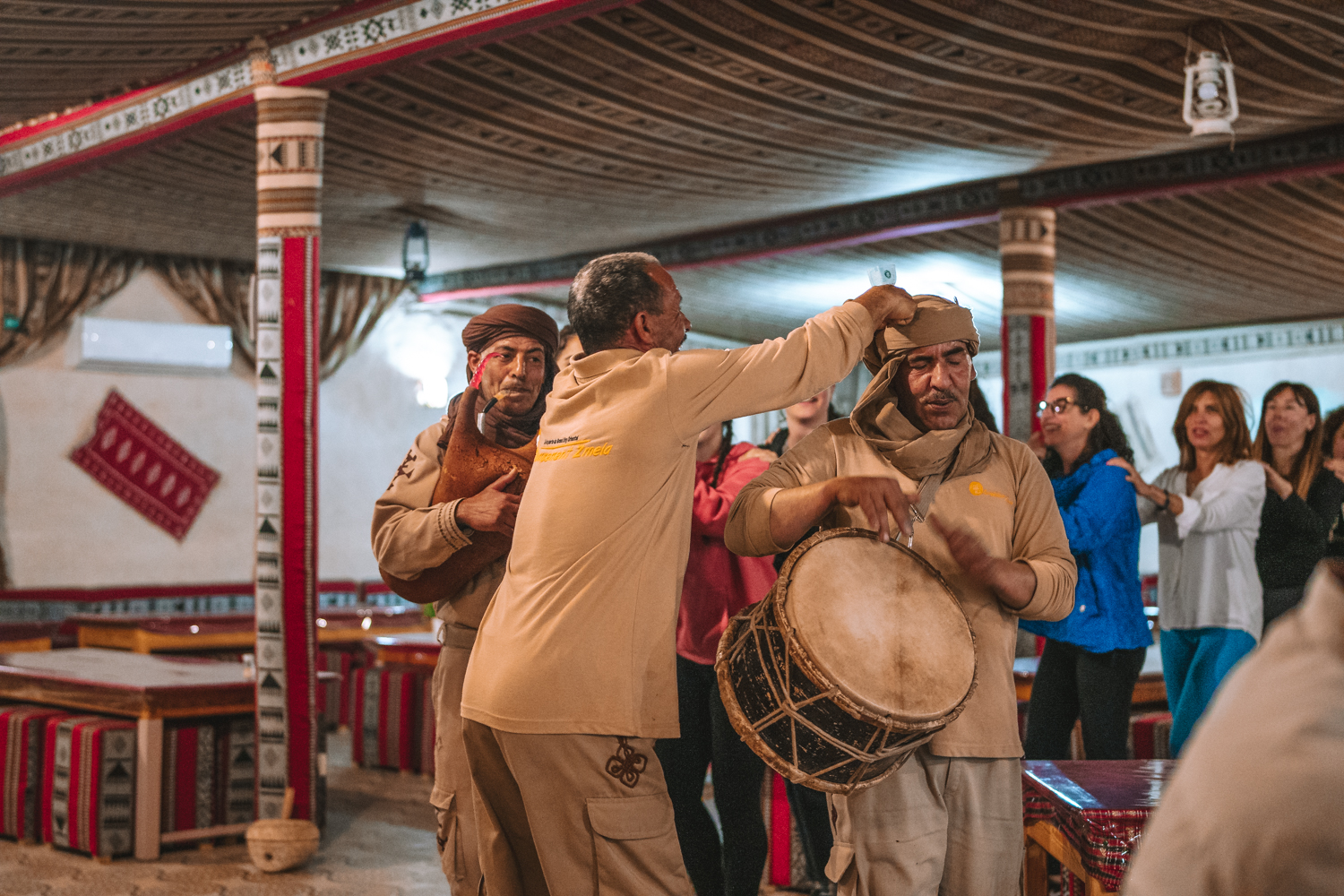
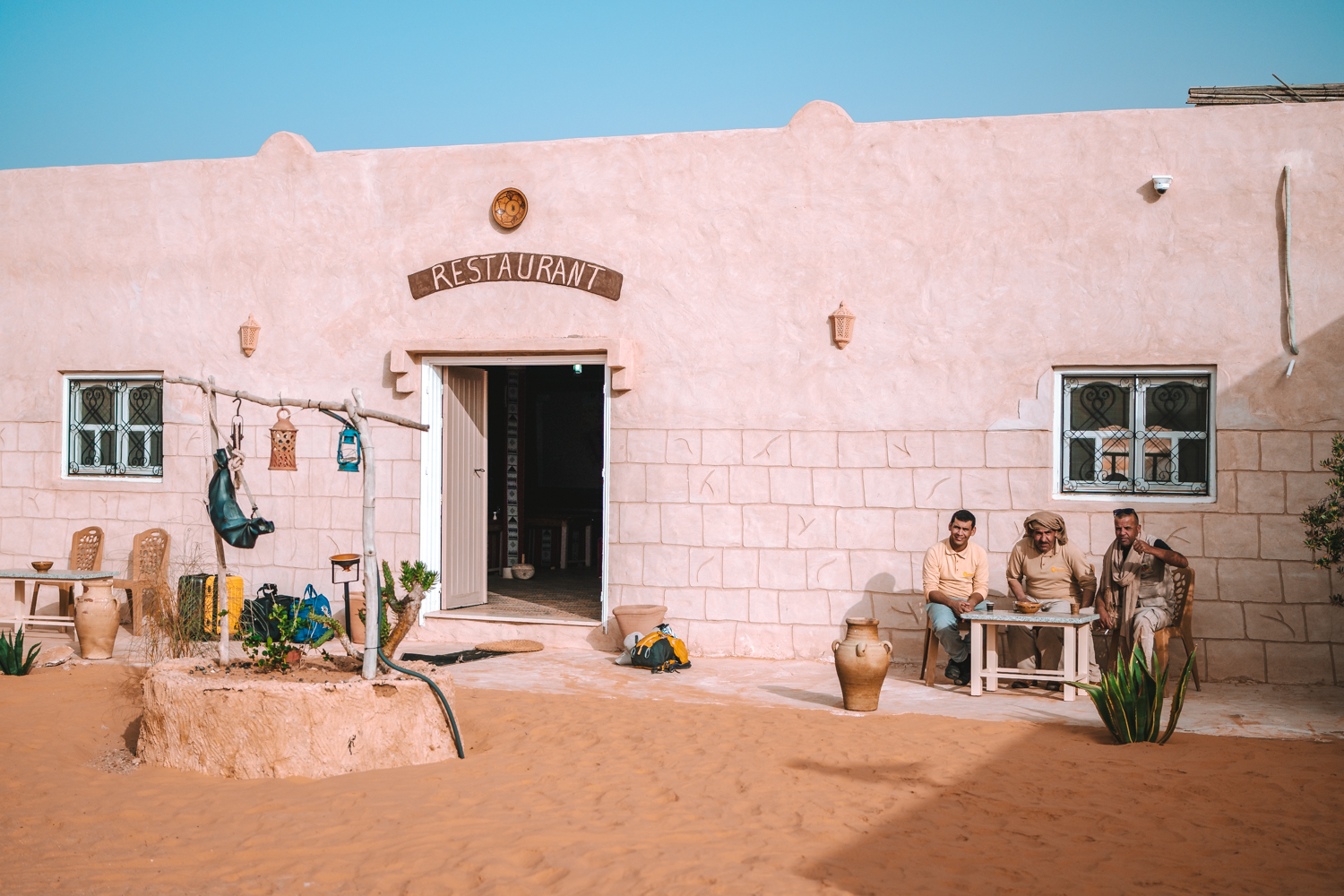

8. Sousse
The ancient city of Sousse is arguably Tunisia’s most popular destination. Its close proximity to the open sea has greatly influenced its history. Sousse has always been an important commercial and military port and was even part of a coastal defence system.
One of its key attractions is easy access to a UNESCO-listed Medina and a beautiful, sprawling sandy beach. The Sousse Medina is a well-preserved maze of narrow streets and gates, where you’ll find the Great Mosque, the Ribat, markets, and other architectural landmarks.
The Ribat is the oldest monument in the Sousse Medina, dating back to 821 AD. It was part of a large network of similar fortresses in North Africa that served as a warning system against incoming attacks from the sea.
Another stop at the Medina is the Sousse Archaeological Museum. It sits on a hill that was once an ancient fortress. Many lookout points give a panoramic view of the medina all the way to the sea. With 3,000 years’ worth of rich history, this museum is the best way to learn about Sousse’s background.
Days in Sousse are spent by the sea, and nights are spent enjoying a great traditional meal at one of the many restaurants in the medina. It’s slow, simple living at its best.
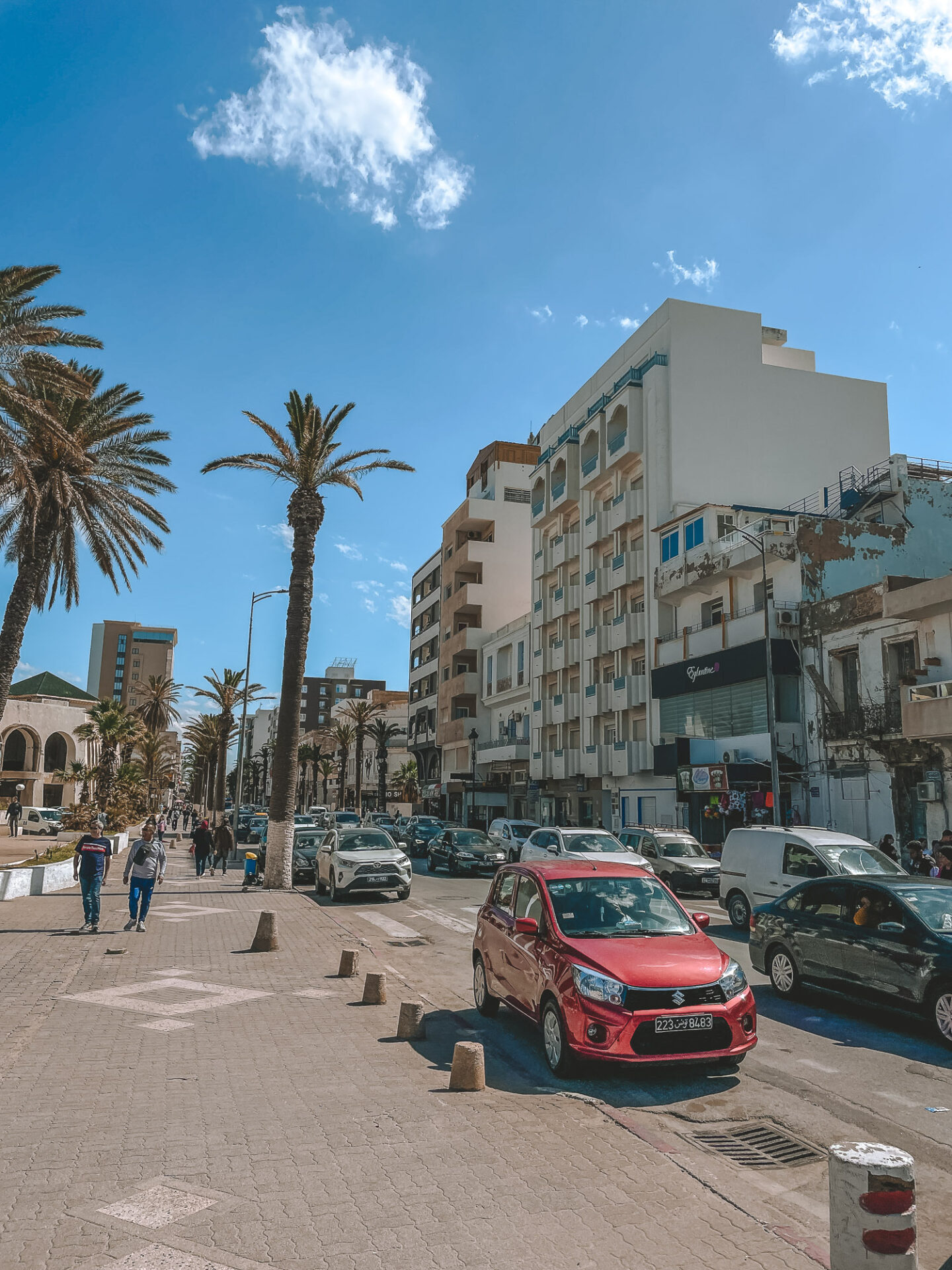


Where to Stay
Sousse beachfront is home to a plethora of big hotel chains, attracting the all-inclusive crowd from Europe. While the resorts may be nice, we chose to support a smaller business and opted to stay at the beautiful Dar Lekbira Boutique Hotel. This newly renovated guest house has 7 rooms, an inner court garden, a terrace, a spa and a sauna. The rooms are massive and beautifully decorated, with all the comfortable amenities like air-conditioning, en suites (with a bathtub and/or walk-in shower), and a desk with coffee/tea-making facilities. Some rooms have adjoining terraces and balconies, while others enjoy city views.
The guest house offers daily breakfast and dinner service on request. Food is made with love and carefully prepared to suit any dietary needs or preferences. The terrace at Dar Lekbira was another highlight, it offered a great place to hang out and enjoy views of the city.
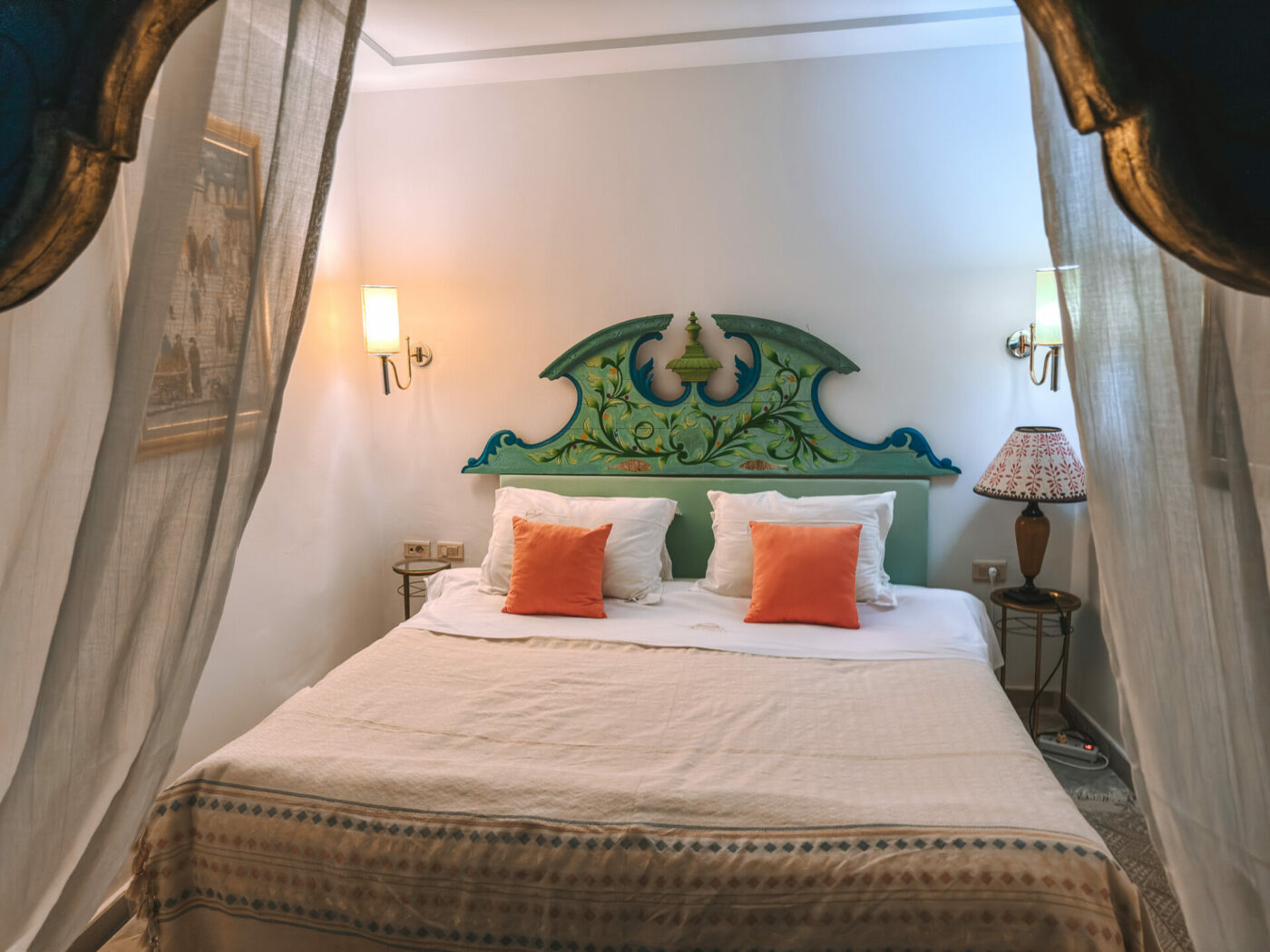
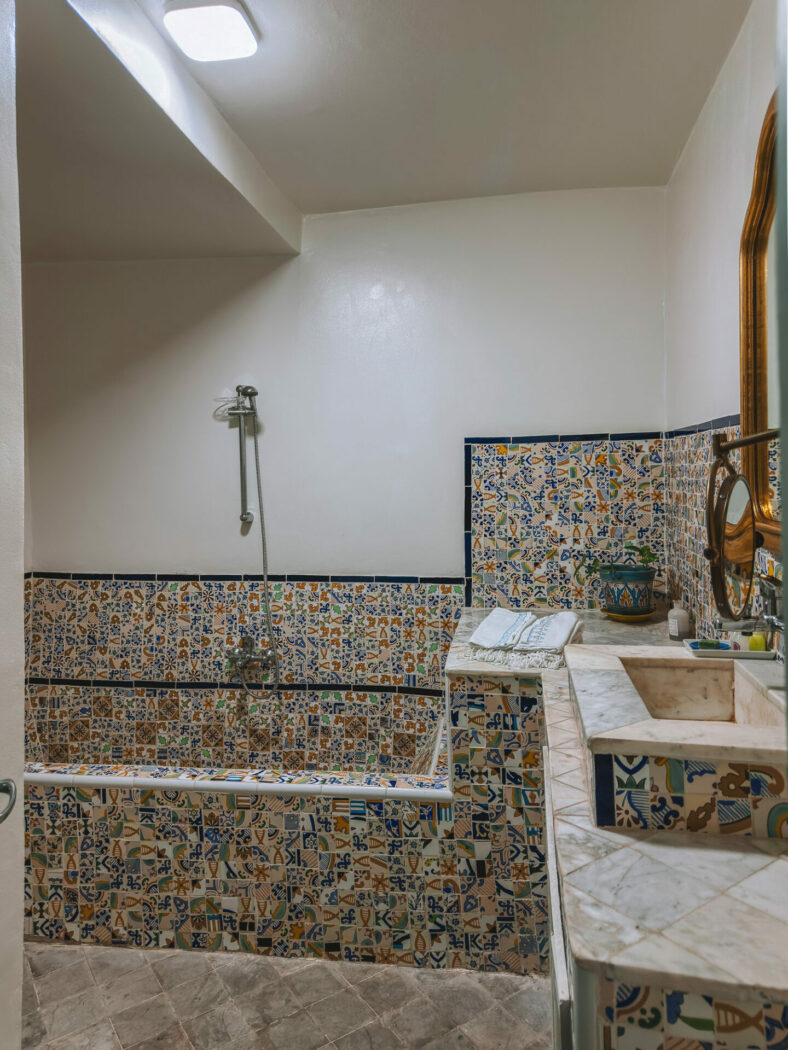
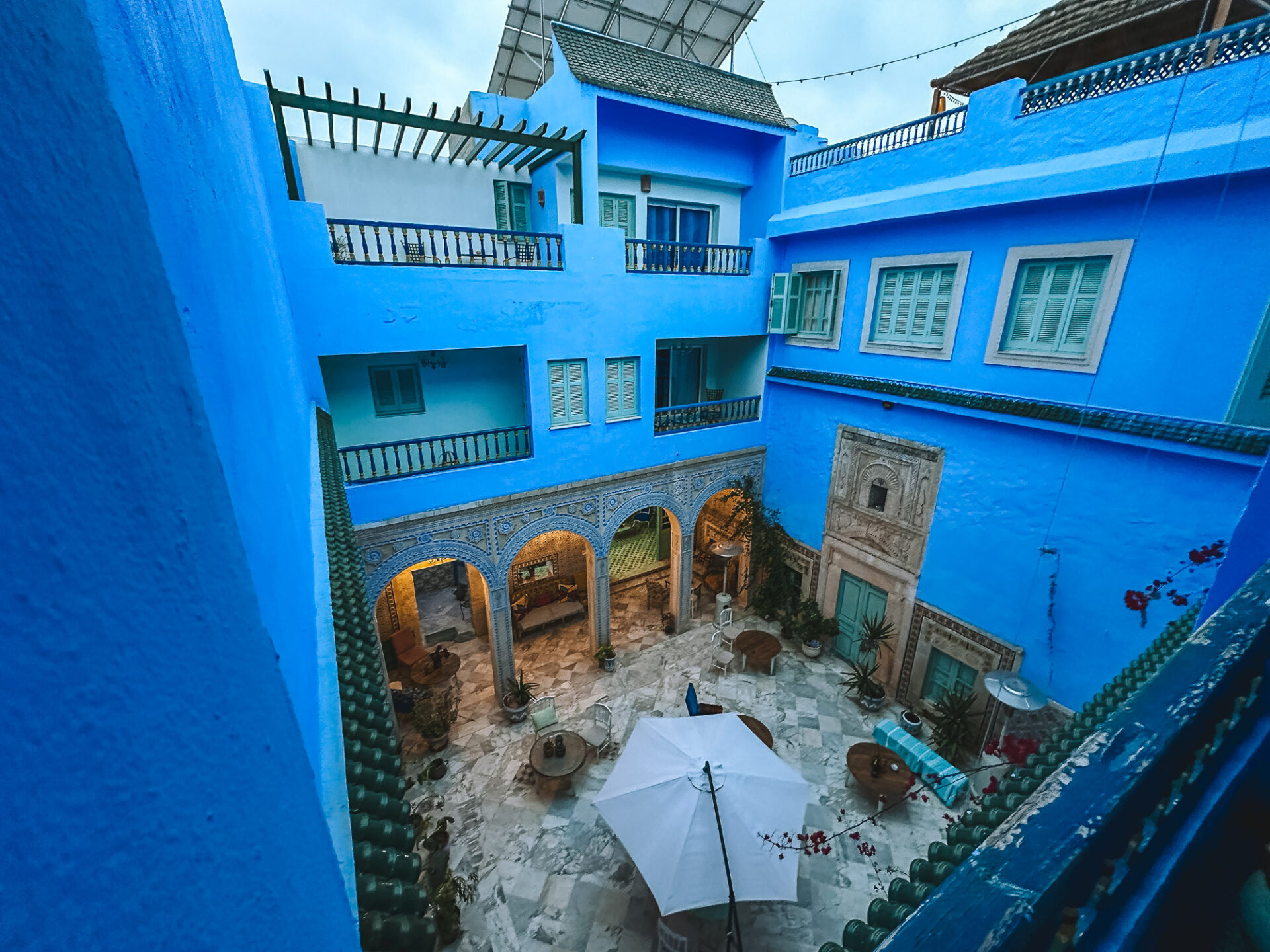
9. Guermassa
Guermassa is a hidden gem, a former Berber village carved into the surrounding mountains. Its original inhabitants were indigenous peoples living in Maghreb, also known as Amazigh. The unique structures, which are partly carved into and built from the surrounding rocks, are barely distinguishable from the surrounding rocky terrain.
The village was abandoned in the 1970s when the government introduced a modernization program that moved those living in Guermassa to more modern living spaces. The town now remains open to the public, but it is rarely visited by most.
When we first pulled up to the sight, we shrugged at our guide. “Is this even worth a stop?” we wondered. But as we walked up the little streets deeper into this abandoned village, it became clear—this settlement was very special and definitely worth exploring! It seemed to have no end, with little houses, churches, and other village structures still intact and open for entry.
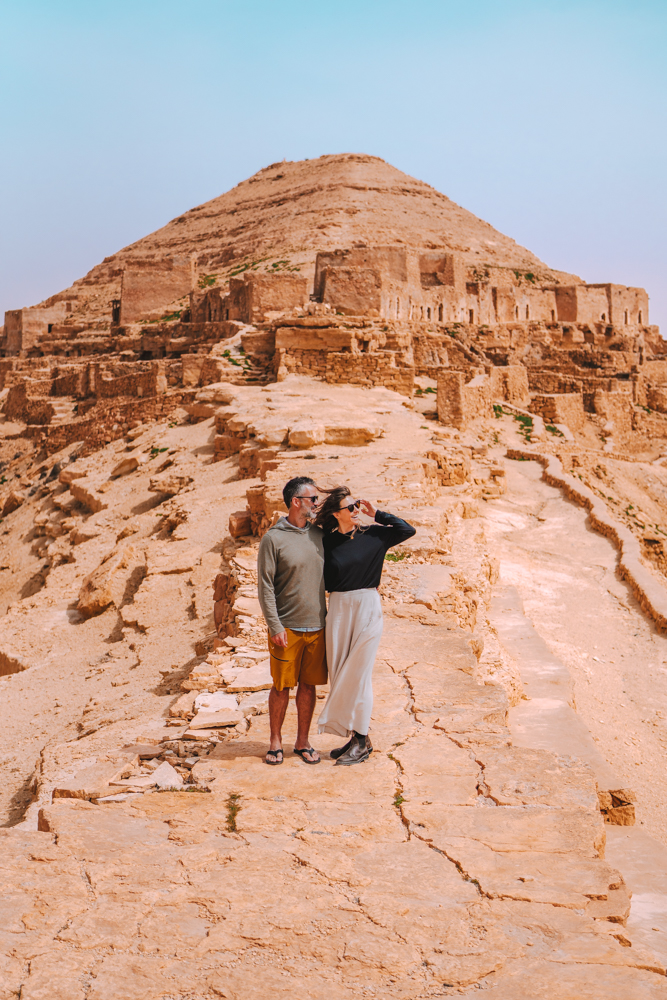
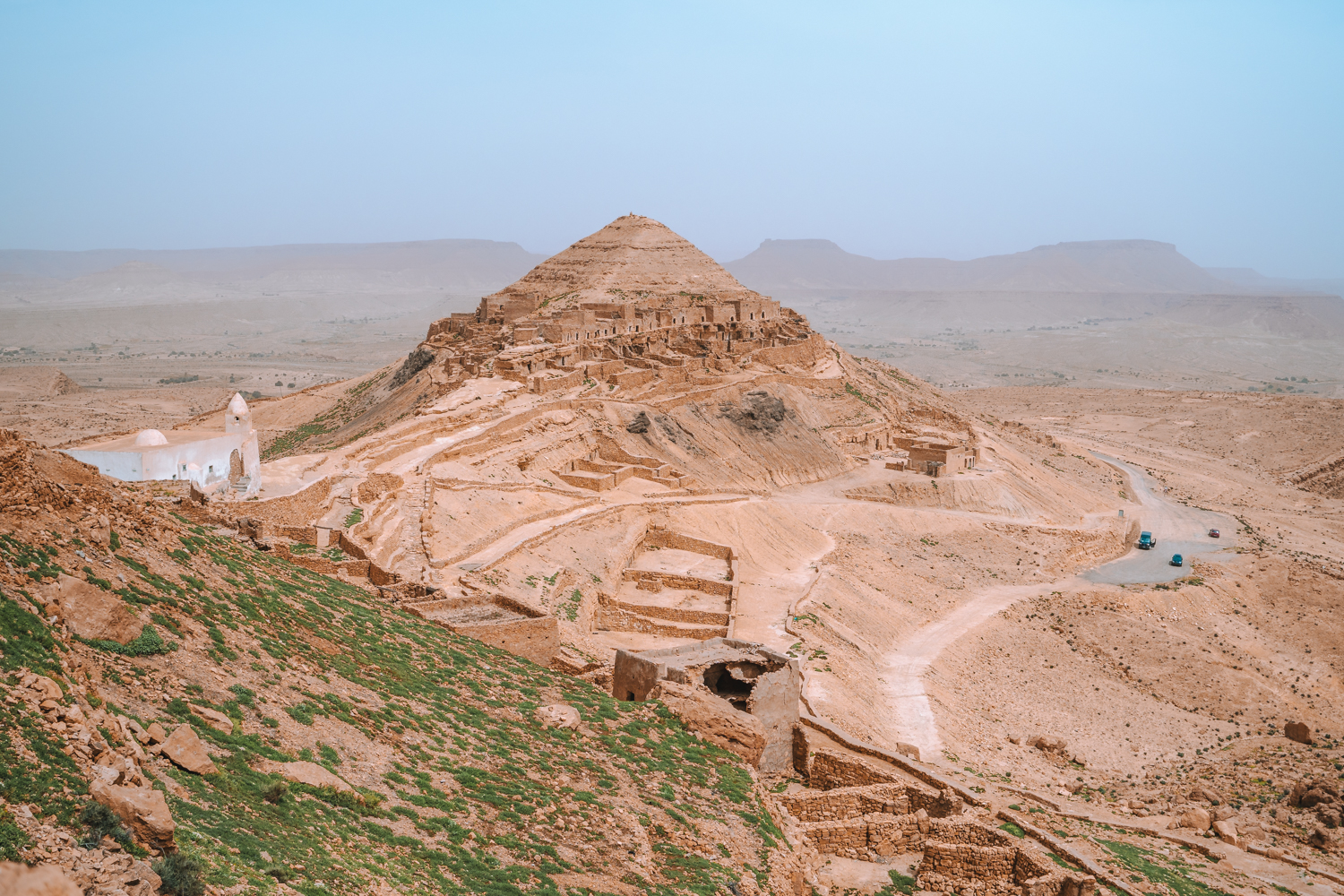

10. Matmata
There’s no place on earth quite like Matmata. Hidden in the mountain range of Djebel Dahar, among barren-looking earth, Matmata is famous for troglodyte houses. These became the subject of awe and wonder after being on the set of Luke Skywalker’s family home in “Star Wars.” Because of the film, Matmata cave homes have become must-sees for fans of the franchise.
These underground homes, akin to traditional Tunisian homes, are carved 10 metres deep under rock. Why go underground? More than warding off attacks, archaeologists say it was to help survive the harsh climate. Temperatures inside the troglodyte rooms stay at a cool 17°C (62.6°F) all year round.
People have lived in troglodyte houses for centuries, and still continue to do so today. Many dwellings have even been transformed into guesthouses and museums, in part to boost tourism as well as to keep Berber traditions alive. It’s a great way for tourists to explore the landscape and learn more about the local customs and traditions.
There are a number of spots in Matmama area worth visiting – our favourite and probably the most well preserved is the Hotel Sidi Idriss. You can stay here overnight, stop in for lunch or dinner, or just wander around the grounds and admire the scenery!
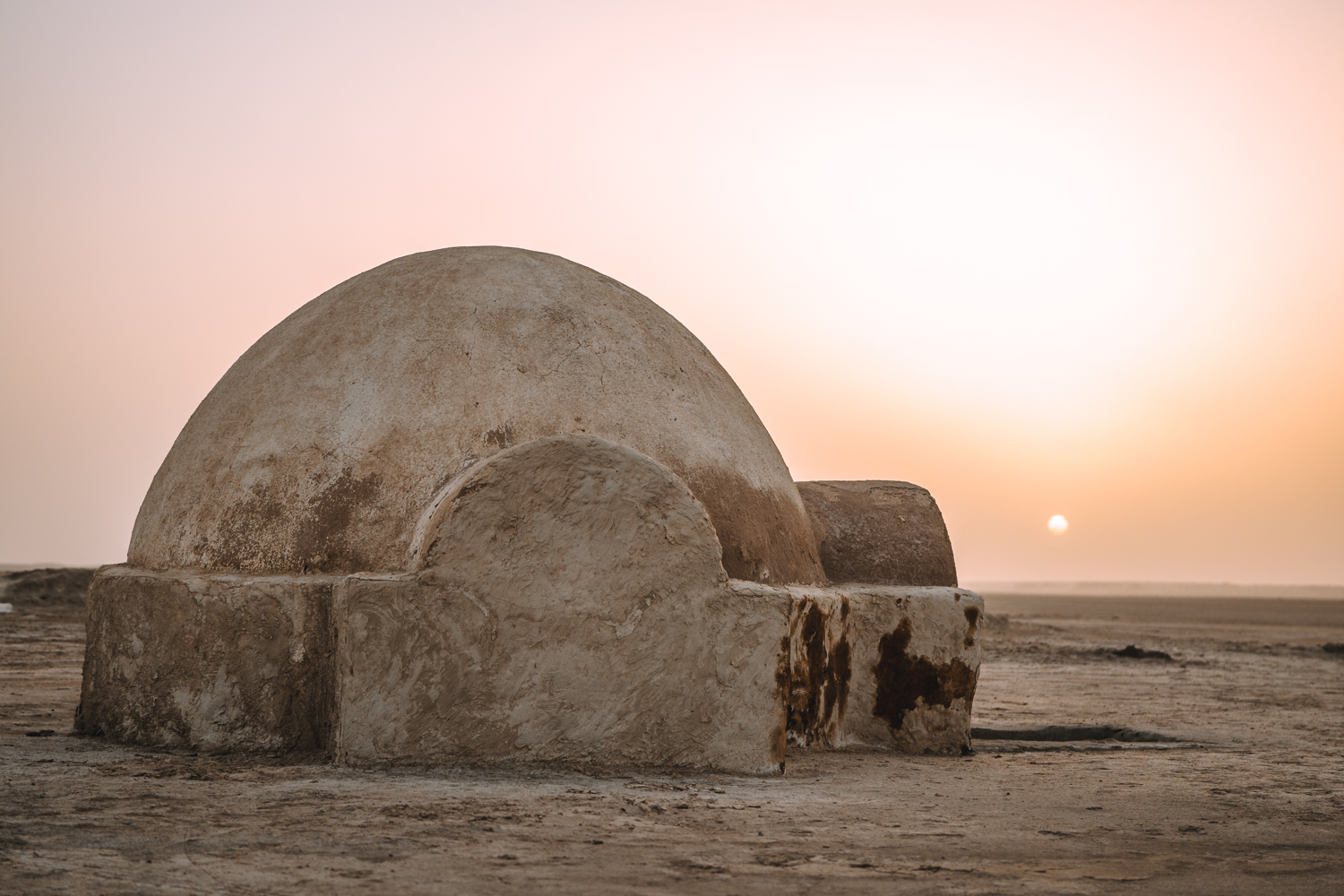


READ NEXT: Things to do in Chefchaouen, Morocco
Final Thoughts on Visiting Tunisia
From sunny coastal towns to cool underground troglodyte homes, the list of things to do in Tunisia is endless. Is Tunisia a destination suitable for everyone? The honest answer is NO!
The country (outside of Sousse and Tunis) is tough to navigate on your own and lacks, in many ways, tourist infrastructure and offerings. But intrepid travellers with a knack for exploring off-the-beaten-path destinations and a fascination with the Middle East and Northern Africa will love spending 1-2 weeks in this unique destination. For a comprehensive Tunisian adventure, we suggest going beyond Tunis and Sousse–it’s such a unique travel destination that every town will have something to offer.
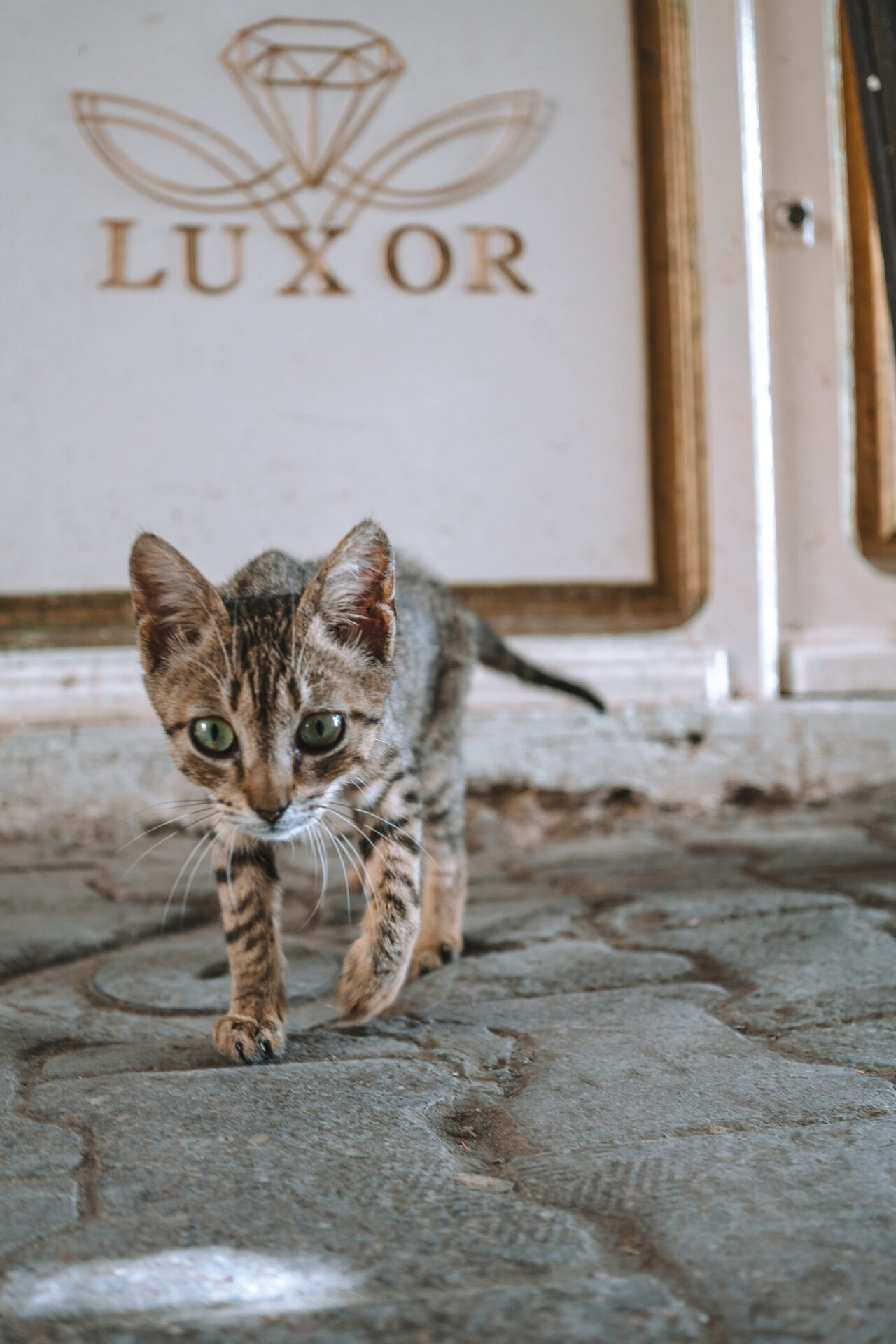

From coastal cities and ancient ruins to a UNESCO World Heritage Site (or nine!), there’s so much to be explored in Tunisia! Leave your travel questions for us below!
Disclaimer: We visited Tunisia as guests of Tunisia Ecotourism, a sustainable tour operator offering group tours and private trips across the country. However, as always, all opinions expressed in this article are our own, no matter who is footing the bill.

AWESOME blog guys. I know we were on the trip with you…but your blog honestly made us want to go back again. Man, we LOVED Tunisia! Love your photos and your insights!
p.s. Huge love to Tunisia Ecotourism, those guys were amazing guides!